-
Car Reviews
- All reviews
- Midsize SUVs
- Small cars
- Utes
- Small SUVs
- Large SUVs
- Large cars
- Sports SUVs
- Sports cars
- Vans
Latest reviews
- Car News
-
Car Comparisons
Latest comparisons
- Chasing Deals
The fuel-sipping Nissan X-Trail E-Power is an enticing option for Aussie family buyers but how does it stack up after five months and 10,000km of testing?
The Toyota RAV4 Hybrid might have been pipped at the post by the Tesla Model Y this year as Australia’s most popular car – but hybrid SUVs continue to be extremely popular in this country.
And it’s about time the RAV4 hybrid faced strong competition. Enter the Nissan X-Trail E-Power hybrid, which I am running as a long-term test vehicle for the next six months and 10,000km.
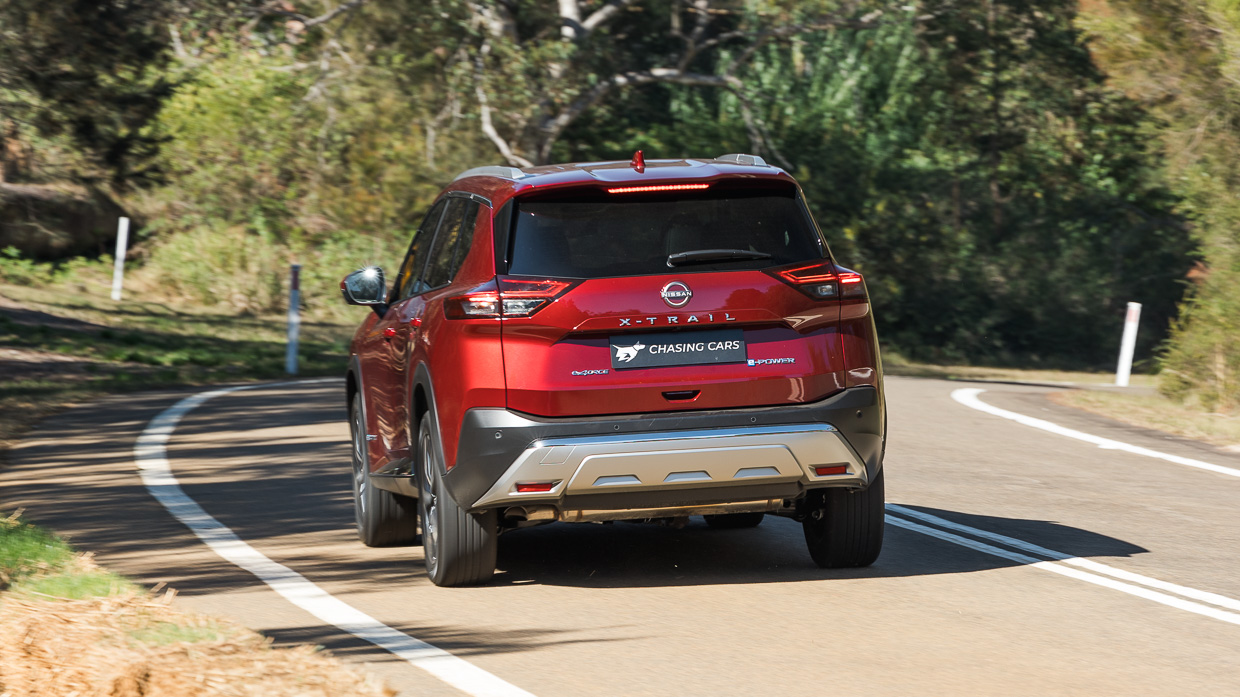
What’s the X-Trail difference? We’ll be exploring that question and others along the way. You can use this page to navigate my experience with the X-Trail E-Power, which I will be testing in urban areas, on highways and in the country.
My last long-termer was the Mitsubishi Outlander PHEV, and you can read my findings here. Under the skin, the Outlander PHEV is similar to the X-Trail but their hybrid systems work in very different ways – and the Nissan isn’t even similar to the Toyota in this sense.
And so, after five months, it all comes to an end.
Driving back from my bi-annual visit to my family from Adelaide to Sydney, I had a lot of time to think over the 1400-odd kilometres and 15 hours of steering.
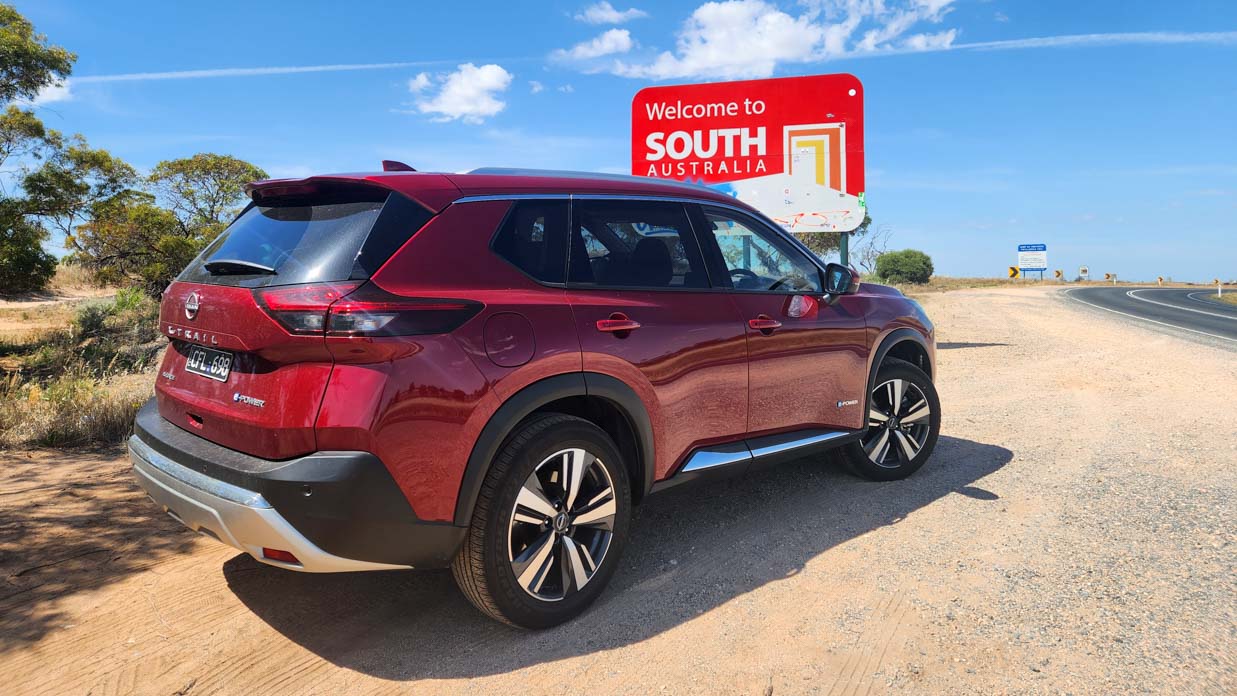
Sadly, the dog and I ran out of things to talk about after the second hour passed.
Riding shotgun on those heated leather seats (covered, relax) ‘Buddy’ was inclined to agree that, when it comes to meeting the brief, the X-Trail rarely puts a paw wrong and that starts with the fundamentals of the interior.
In meeting the brief as a family car, the expanse of cabin space in both the front and back seat is just brilliant and shows that the large-ish exterior dimensions are not wasted.
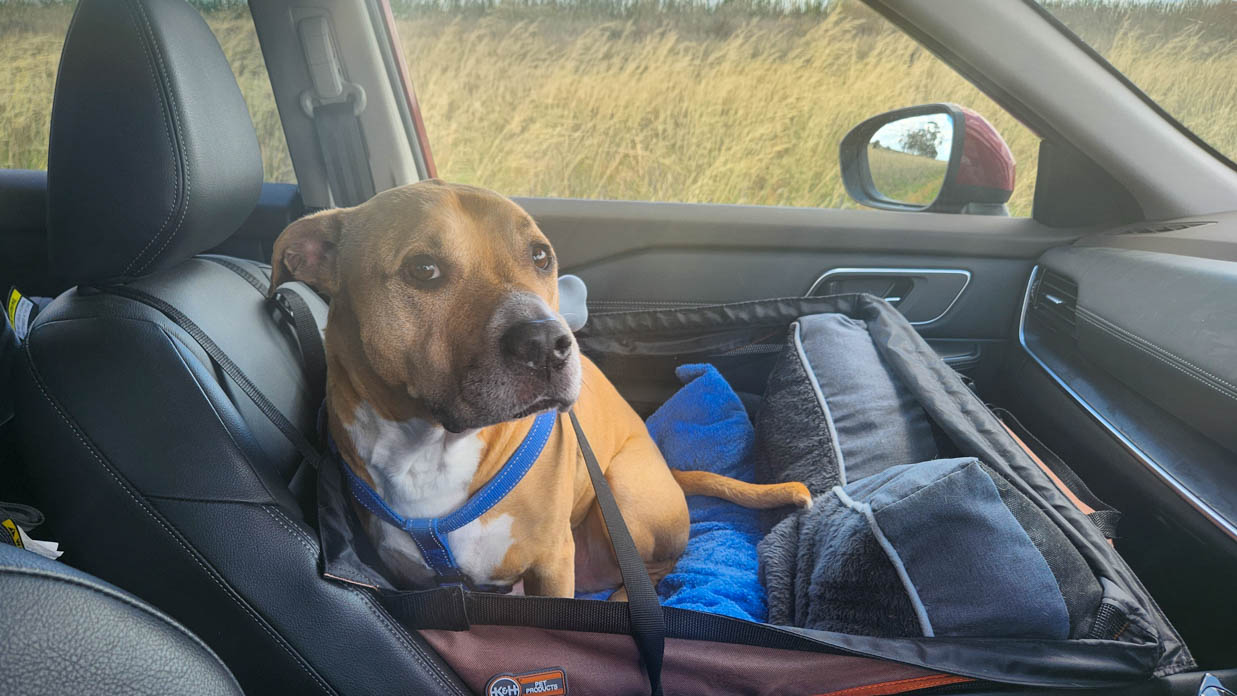
While the 575L boot (measured to the roof, remember) was struggling to accommodate all of our luggage and swag for the trip home, those sliding and angle-adjustable rear seats added a layer of flexibility in cargo carrying that allowed us to haul two adults, a baby, dog and all our things safety on road trips stretching from the far east, to the south Aussie coast.
And even on the daily grind, with the rear doors that opened right up to 85 degrees and a high ceiling height, I had ample room to maneuver my daughter into and out of her child seat without risking bumping heads on the headliner or injuring my back from an awkward struggle.
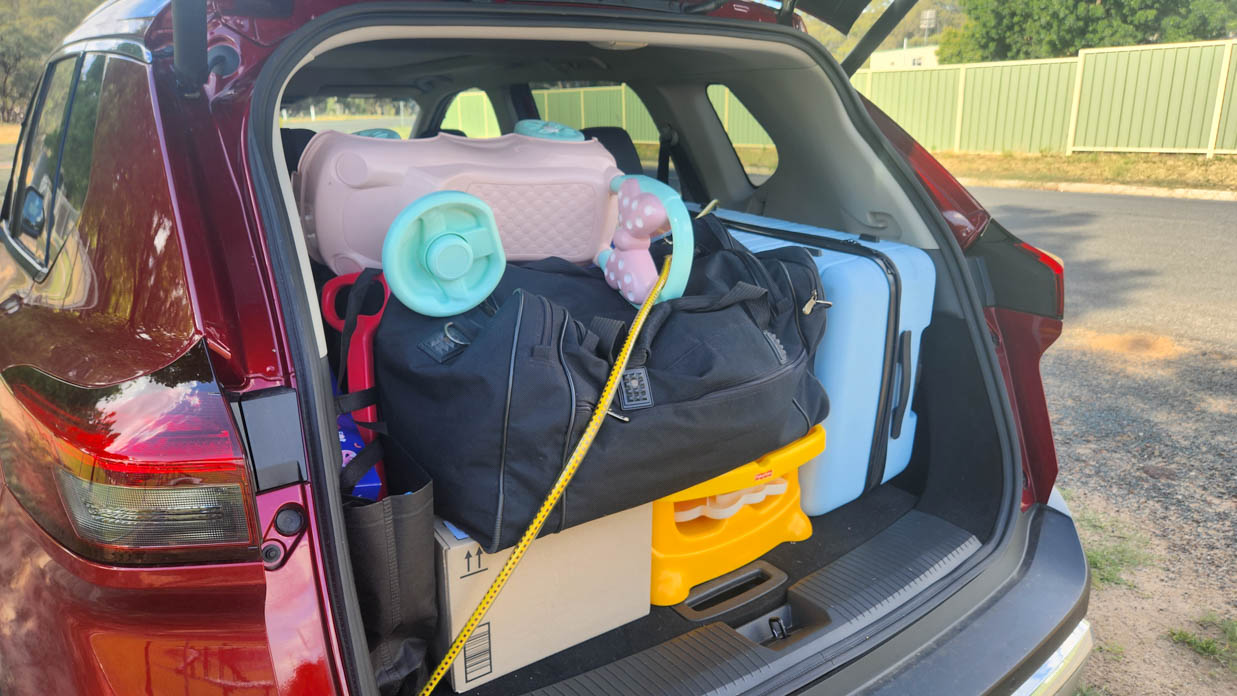
In fact, it’s no exaggeration to say that I transferred our rearwards-facing baby seat in and out of the X-Trail over 100 times during our five months together, as I shifted between other test cars and my personal one.
And I can honestly say this has to be one of the easiest vehicles I’ve ever had the pleasure of fitting said safety aid to.
There’s also something to be said about how well the interior held up after 17,000kms, roughly 10,000 of which were done by yours truly.
Aside from some indentation on the driver’s side door top where I rest my elbow every day, the interior is largely as it was upon pickup, with no visible wear to the seat bolstering and the fake aluminium texture that lines the centre console held up far better to daily abuse than the gloss black plastic finish in my previous Mitsubishi Outlander PHEV.
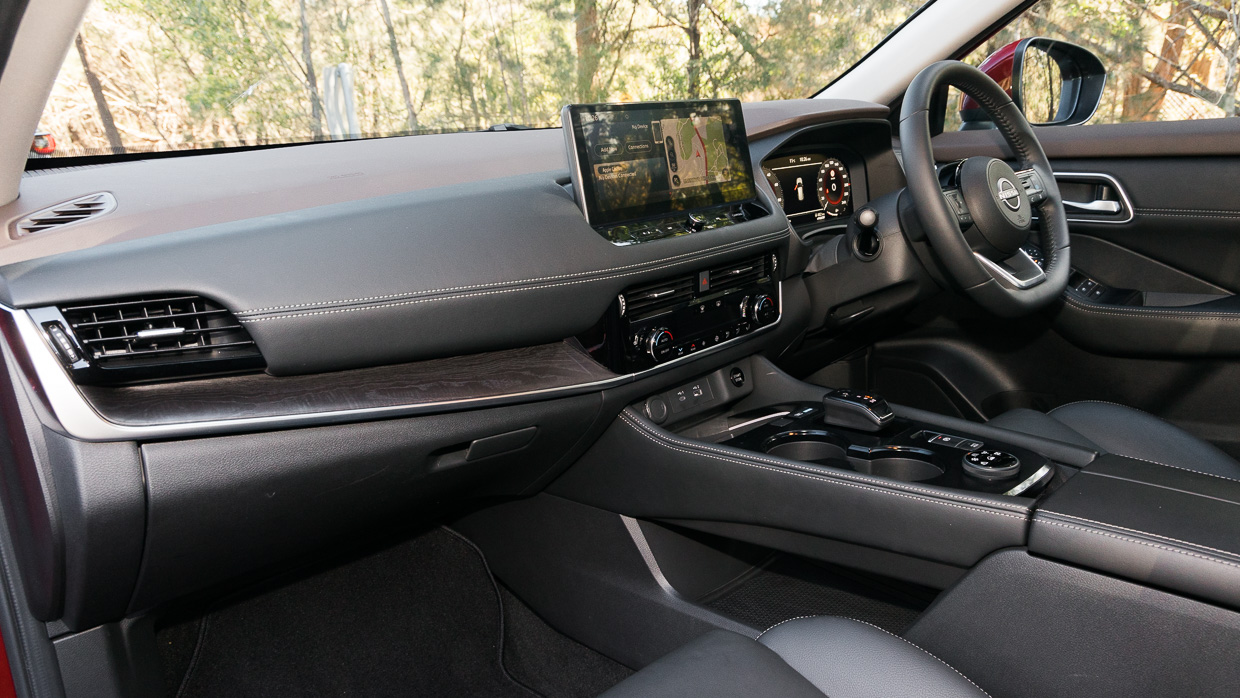
The flaws of this interior though, were less about what you could see and more about what you could hear.
The unbranded six-speaker stereo inflicted upon every X-Trail grade bar the Ti-L is complete rubbish. The sound is flat, dull and something I’ve grown to hate more as I spent time with the X-Trail.
It’s notable that over time I cut my music listening down to almost zero and instead turned my ears to podcasts where sound quality was less of an issue. Thankfully, the 10-speaker Bose stereo in the Ti-L is better.
A key letdown from my time in the closely related and otherwise impressive Outlander was the unwieldy suspension that made the car tiresome to drive in suburban backstreets. And I’m happy to confirm that no such issues were found in the X-Trail.
In fact, it often surprised me with its talents on the right bit of road.
It’s no Volkswagen Tiguan, which still leads this segment in terms of dynamics, but the Nissan is still very good and our model was aided by the torquey and refined E-Power hybrid system.
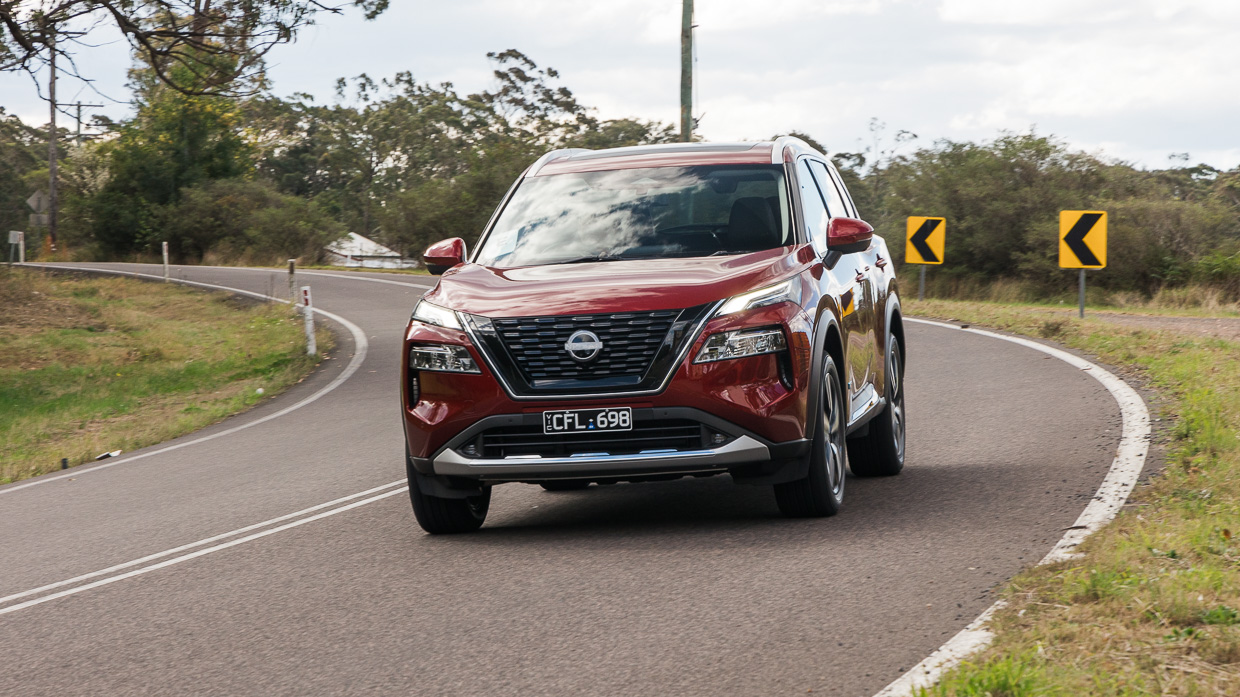
With the lack of a CVT, I also found the X-Trail to be considerably more pleasant to drive than rivals like the Toyota RAV4 Hybrid, as the Nissan’s 1.5L turbo-triple operates at a low hum most of the time and even when things get loud, it was only briefly.
I did encounter a ‘bug’ however.
My commute consists of a long slow ascent under the Sydney Harbour via the Eastern Distributor and it was here, and in other similar conditions, that I noticed the ‘pulsing issue’.
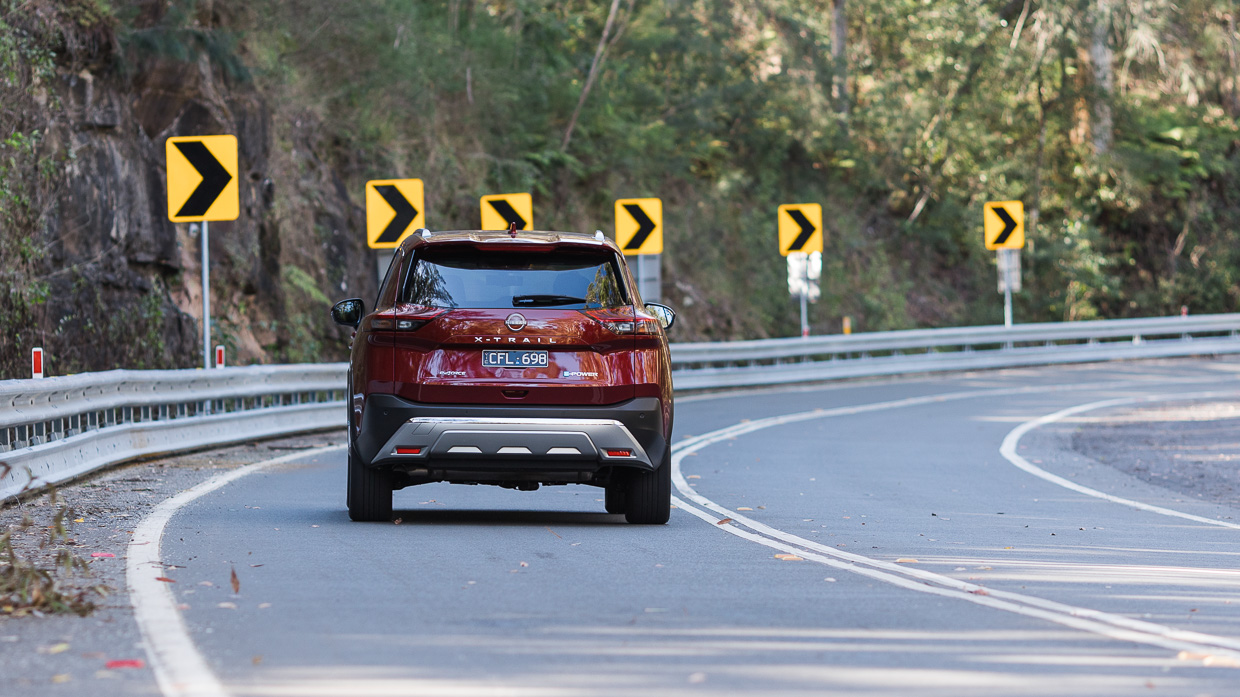
In these conditions, the drivetrain had a habit of cutting in and out, similar to someone turning a blender on and off at a wall in a quick fashion.
This was replicated by other staff at Chasing Cars and I suspect it has to do with a lack of electricity being directed from the battery/inverter to the electric motors in these more challenging conditions.
Hopefully, this will be ironed out in future updates.
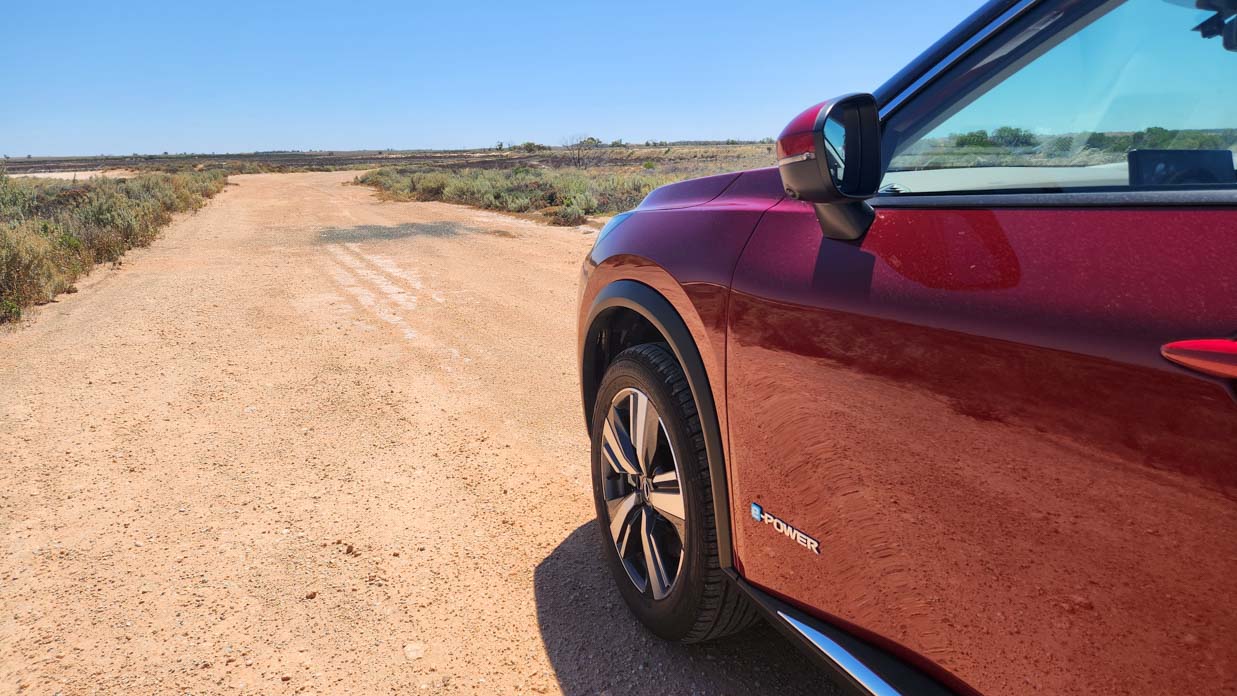
With its solid AWD system, the X-Trail E-Power was also able to help my family explore national parklands, campgrounds and other places with confidence. You can read more about my on-dirt experience in update five, but spoiler alert: the lack of a spare tyre was a huge dampener on this touring ability.
This isn’t just an X-Trail issue though, in a mild rage I recently scoured the spec sheet of every midsize SUV on sale and found that only two retained a spare wheel once a hybrid system was fitted: the RAV4 and the newly-launched Kia Sportage. And in a big country like Australia, that simply isn’t good enough.
During our time with the X-Trail, we recorded an average consumption of 7.4L/100km with a skew towards highway driving, which is up quite a bit from the 6.1L/100km claim.
While this figure is better than the previous 8.4L/100km I recorded when reviewing the ST-L with the 2.5-litre petrol engine, I’ve overall taken this as a negative. In 2024, hybrids should be pushing the game further than this. Let’s not forget that the previous-gen X-Trail diesel offered a claimed consumption of 6.0L/100km….
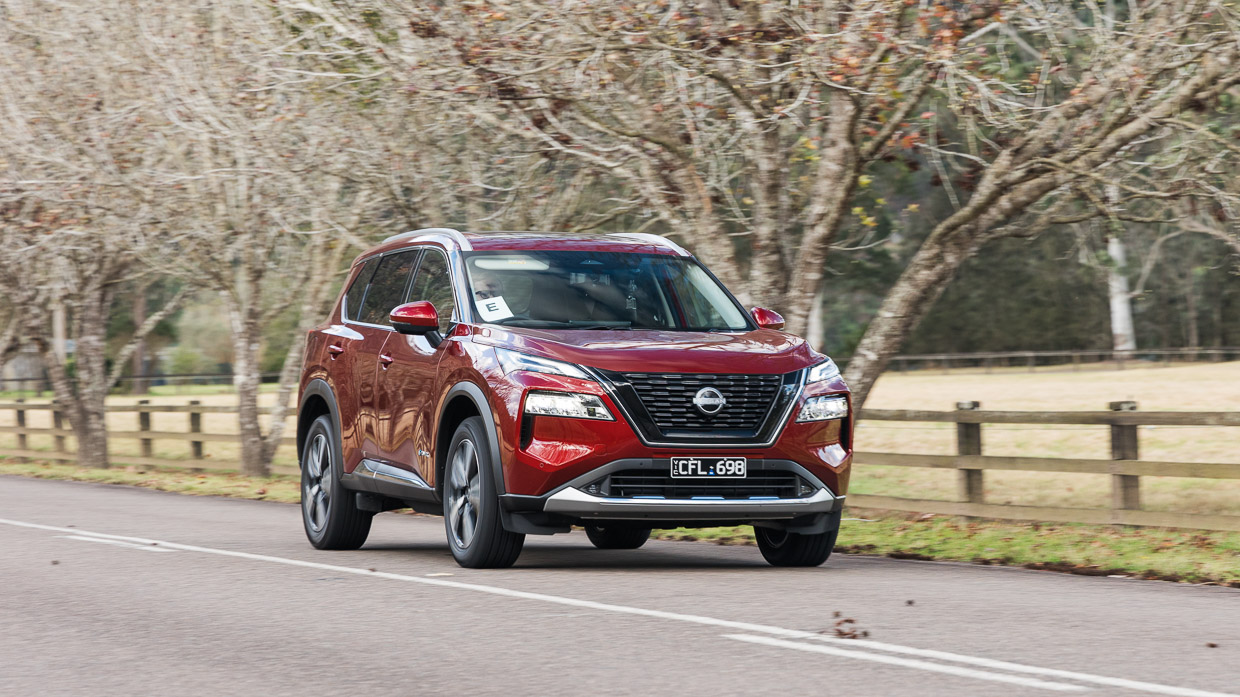
For reference, back in 2019, our Toyota RAV4 Hybrid long termer consumed an average of 6.0L/100km with a slight urban skew.
In terms of urban areas, we saw 5.8L/100km and 7.8L/100km on the highway, if you’re confused by these numbers it’s best to remember that the X-Trail E-Power is motivated exclusively by electric motors, which unlike traditional combustion engines are at their least efficient on the highway.
It’s tough making a good vehicle in 2024. A good product doesn’t always guarantee good sales, and I’ll admit the allure of gimmicks can be strong in a segment that is so same-same. It’s for this reason that I’ve grown to appreciate cars that focus on solid fundamentals.
The X-Trail is one such vehicle.
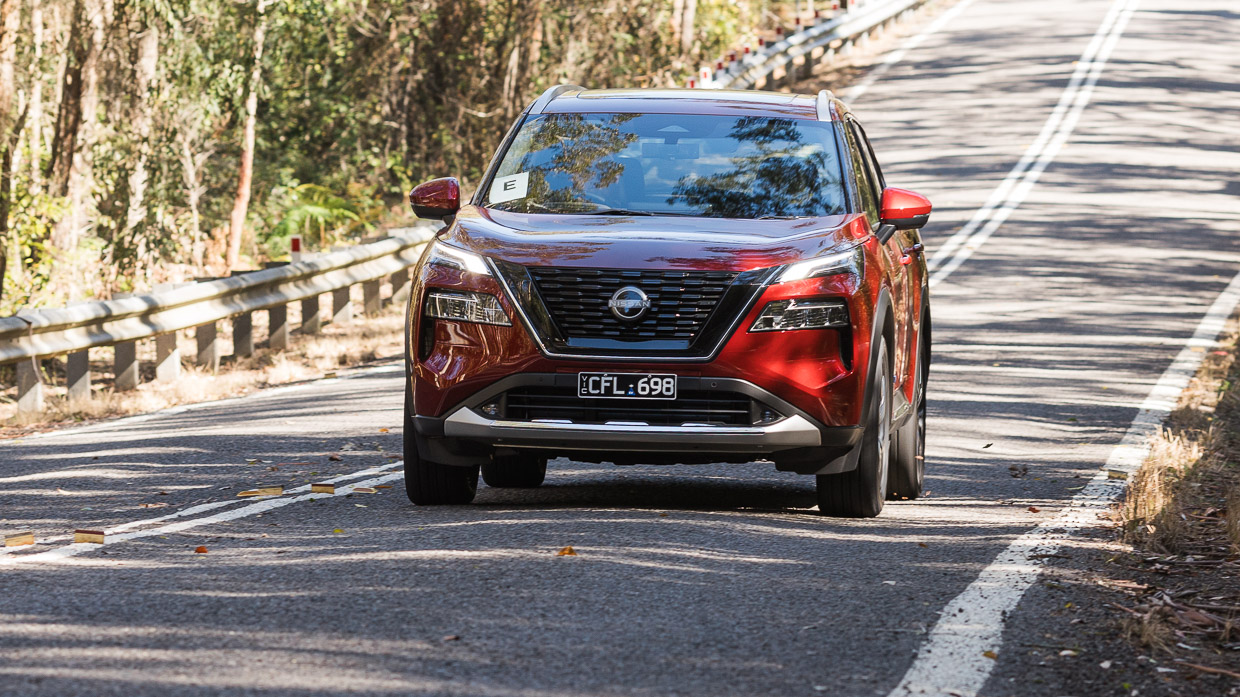
It’s not particularly appealing in any one respect, but in terms of meeting the brief the X-Trail excels or performs adequately when so many of its competitors offer little but mediocrity or issues in at least one major area.
Real X-Trail pluses include everything from its fuss-free hybrid system, its reasonable asking price, ultra-practical interior and the fact that it’s readily available to buy – unlike its wait-time plagued Toyota rival.
And while that E-Power system might not surpass the RAV4 in terms of fuel economy figures, it does provide a more refined EV-like driving experience and consumption than the 2.5L petrol base engine, for a fairly reasonable upcharge of $4200.
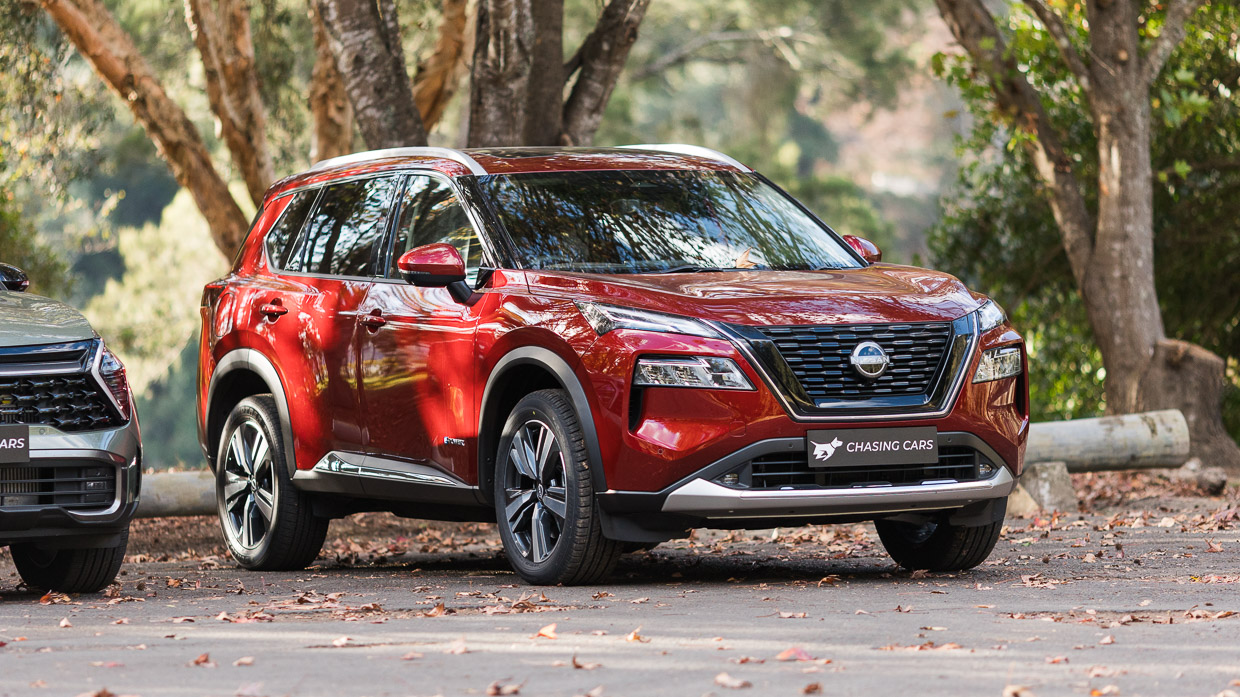
While the sub-$50,000 ST-L E-Power grade is enticing, personally I do think the Ti grade is worth the extra spend due to features such as nicer interior upholstery, the head-up display and the larger touchscreen.
Maybe just swing by JB Hi-Fi for a new stereo on the way home though.
Nissan’s own advertising has the X-Trail climbing a mountain. Perhaps it’s an absurd expectation for a softer roader, but I’ll be damned if I don’t test it out myself
If there is one thing I try to keep consistent when reviewing long termers it’s to truly treat them as ‘my’ everyday vehicle, even if it’s not 100 percent suited to the task. If it does well or falls short, you’ll read about it right here.
This, of course, comes with some caveats but when my mates invited me along to a camping weekend in the Snowy Mountains, my noble Nissan was called upon.
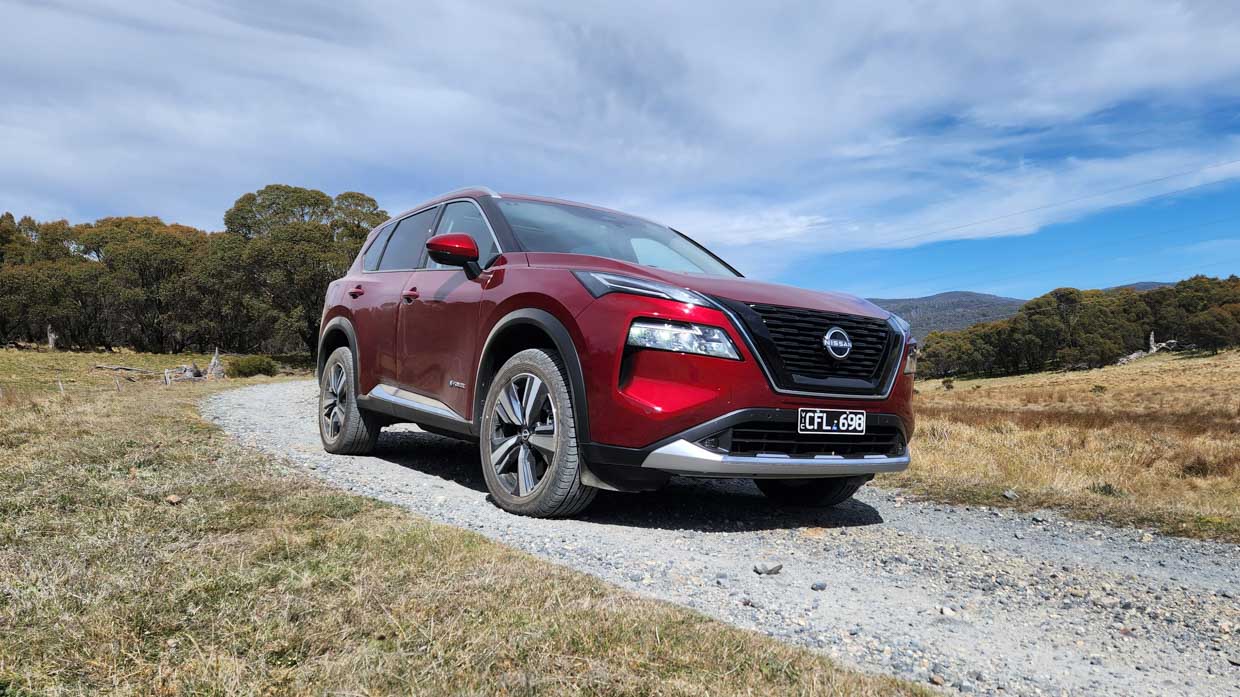
It’s got ‘Trail’ in the name, right? Time to put your cards on the table Nissan.
The roads leading to our campsite sat on the upper limit of what I would expect a soft-roader to traverse but after a bit of research and a scouting lap from my friends in ‘real’ 4WDs I was keen to give it a run.
Some might think it absurd to test a unibody SUV such as this off the bitumen, but to me this is where this category of vehicle justifies itself over a traditional sedan or station wagon.
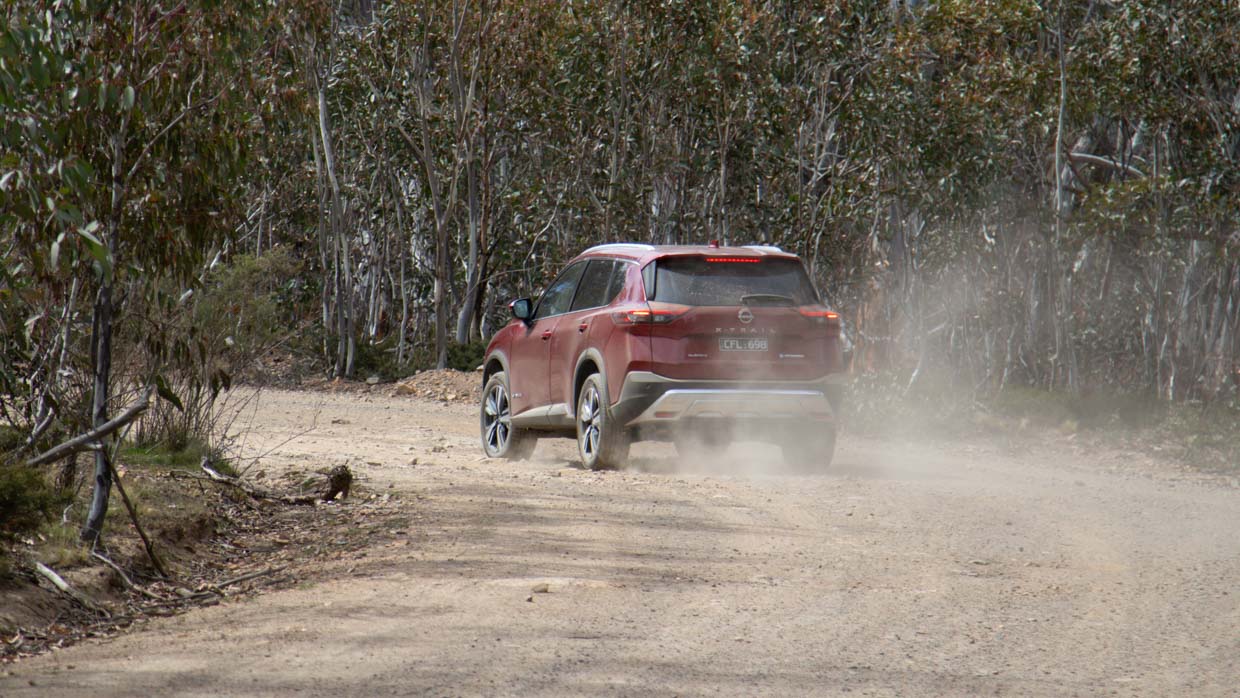
After five hours bombing along NSW’s southern highways and right through Canberra, I turned off onto undivided and unrelenting backroads that gave a bit of a hint to the terrain ahead.
Eventually the black top did end, and here the challenge would begin. And really, this was a long way to come to be disappointed.
The fast-flowing dirt roads leading up to our campsite are well laid for a dirt surface and proved to be a tantalising opportunity to test the ‘E-4orce’ AWD system of the X-Trail E-Power.
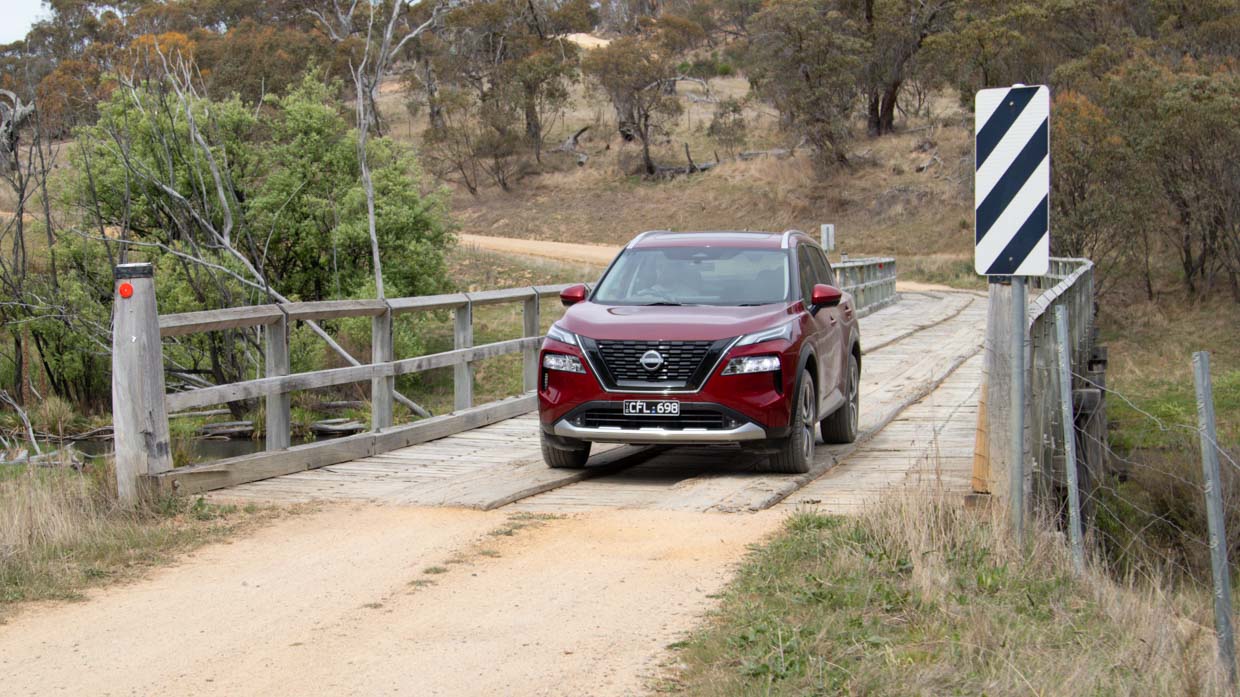
Perhaps there is a hint of the 1970s Datsun 1600 (nee, 510) safari rally car mixed into the metalwork somewhere, but it’s not awake today. The traction control very much favours a conservative snatch of the brakes when you turn into a corner, but that’s probably for the best, I suppose…
After crossing a wooden bridge and slamming on my brakes as I happened upon nature’s erratically designed diagonal storm water drains, it became evident the conditions were changing and my driving style would need to follow suit.
The quarry-like roads are peppered with jagged rocks along their long and twisting descents into the bottom of the valley, followed by assets into the more condensed forested areas.
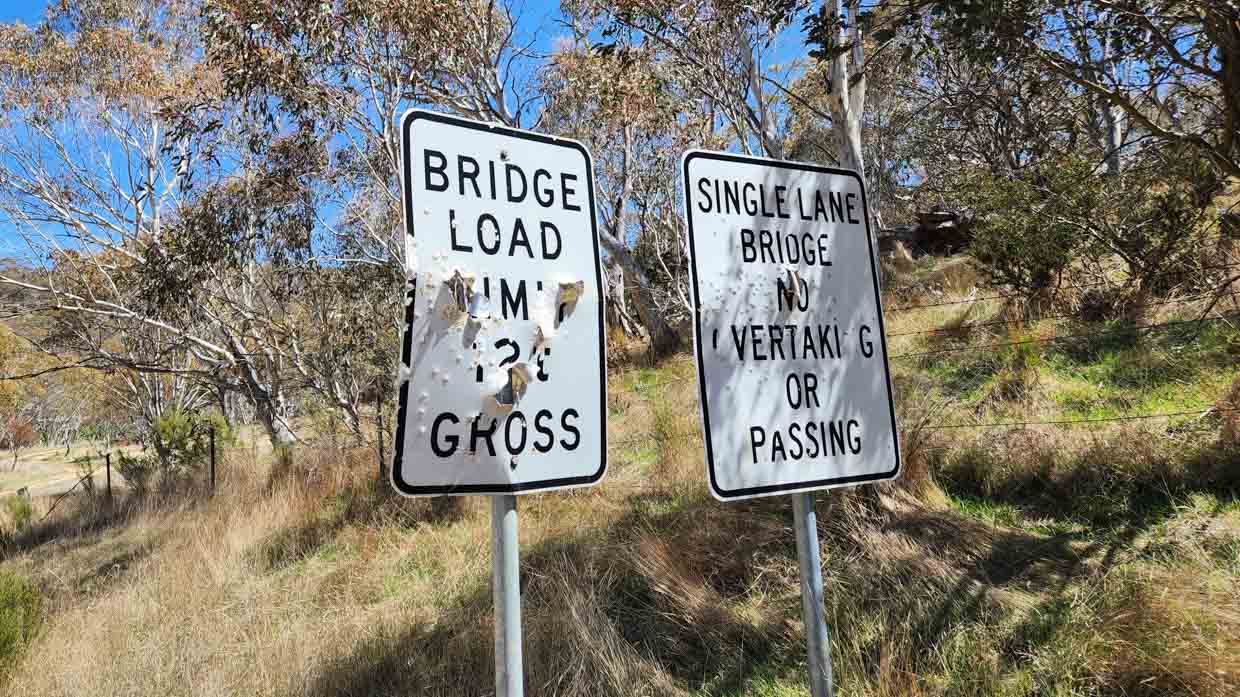
Save for a few shot-up road signs, it’s beautiful and breathtakingly refreshing how quiet and untouched much of this lush, green land is, but admiration would have to wait until I was set up at camp.
I became acutely aware of the value of a fully charged two-way radio during this time, though not nearly as aware as I was of the Nissan’s complete lack of a spare tyre. I was not looking to repeat my tyre-related antics of Month 2 this far from a reliable phone signal.
It was for this reason that I lowered the pressures on the spongy highway terrain tyres a few klicks back when I first turned onto the dirt. Wrapped around 19-inch alloys, this tyre and wheel package has again proved advantageous on this terrain over the more fashionable 20s on the Ti-L.
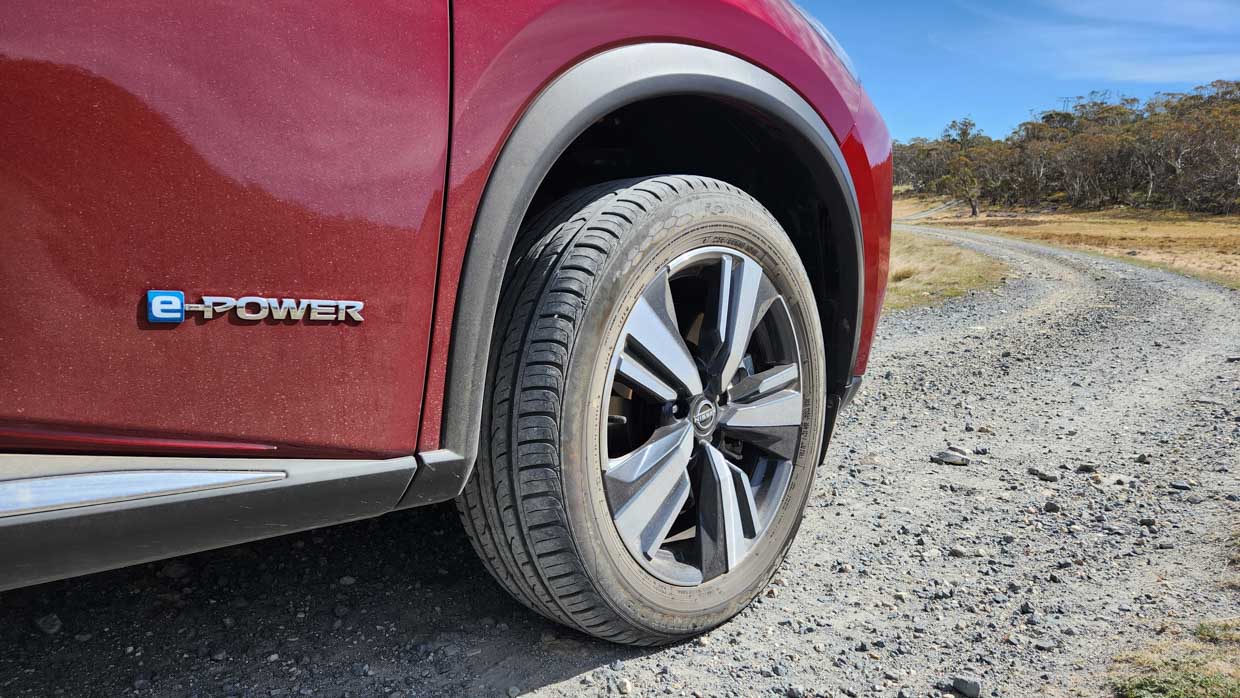
The ebbs and flows of the trail did threaten the 187mm ground clearance of our X-Trail, which hangs 18mm lower in E-Power guise, but with some patience on the throttle and consideration with angles I progressed without incident.
Even before the hybrid’s height discount, the ground clearance isn’t exactly class leading: that accolade goes to the Subaru Forester 2.5i-S which offers a Toyota Fortuner-beating 220mm to play with (to say nothing of the even higher-riding, rugged Wilderness version sold in The States).
Given that our hybrid X-Trail sends power to the ground via a pair of high-torque electric motors, I wasn’t surprised at how quickly it broke traction on the loose dirt surface. Thankfully, by switching to one of the multiple off-road modes, it became notably less ‘touchy’.
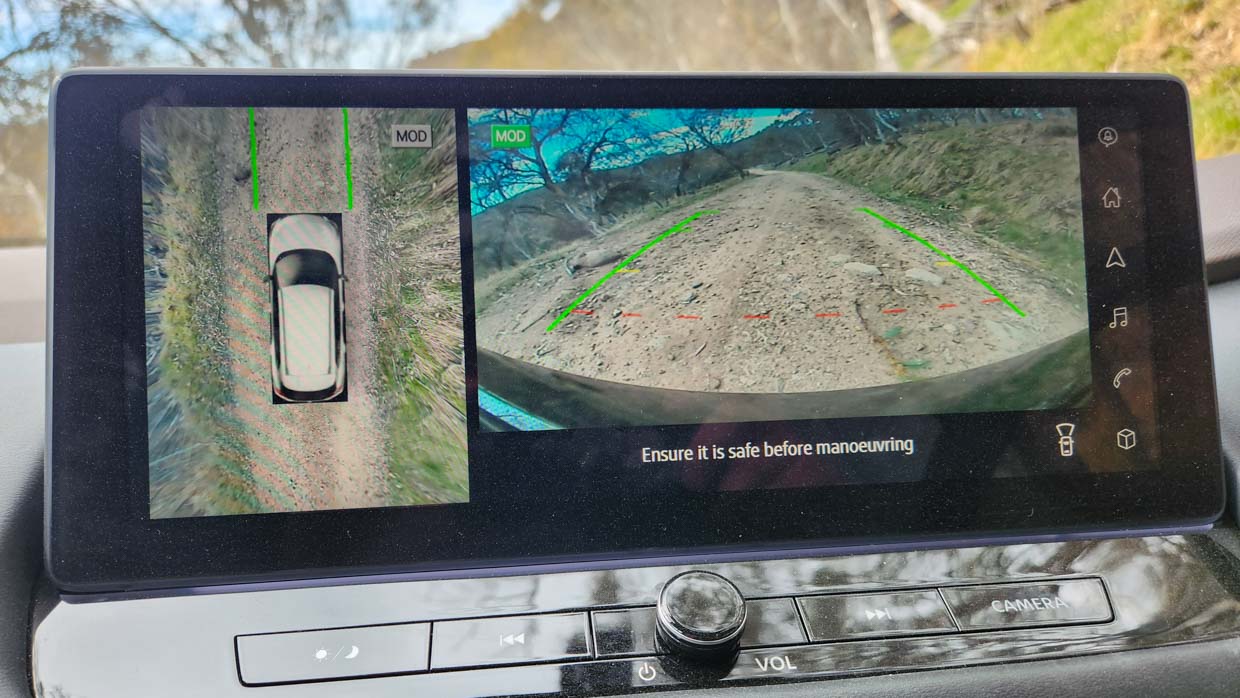
On the topic of driver aids, hill descent control was useful but far too slow for the conditions (or my patience, for that matter) so it was quickly switched off. More importantly, though, is visibility.
The 360-degree camera, with its separate front/rear cameras (shown in tandem on the centre screen) proved a useful ally for navigating around some of the larger rocks and ruts of the route as they disappeared under the bonnet of the Nissan’s quite prominent bonnet.
But the devil really is in the detail with these things and the image proved to be too ‘flat’ to properly gauge the size or distance of many objects in the view of the fish-eyed lens.
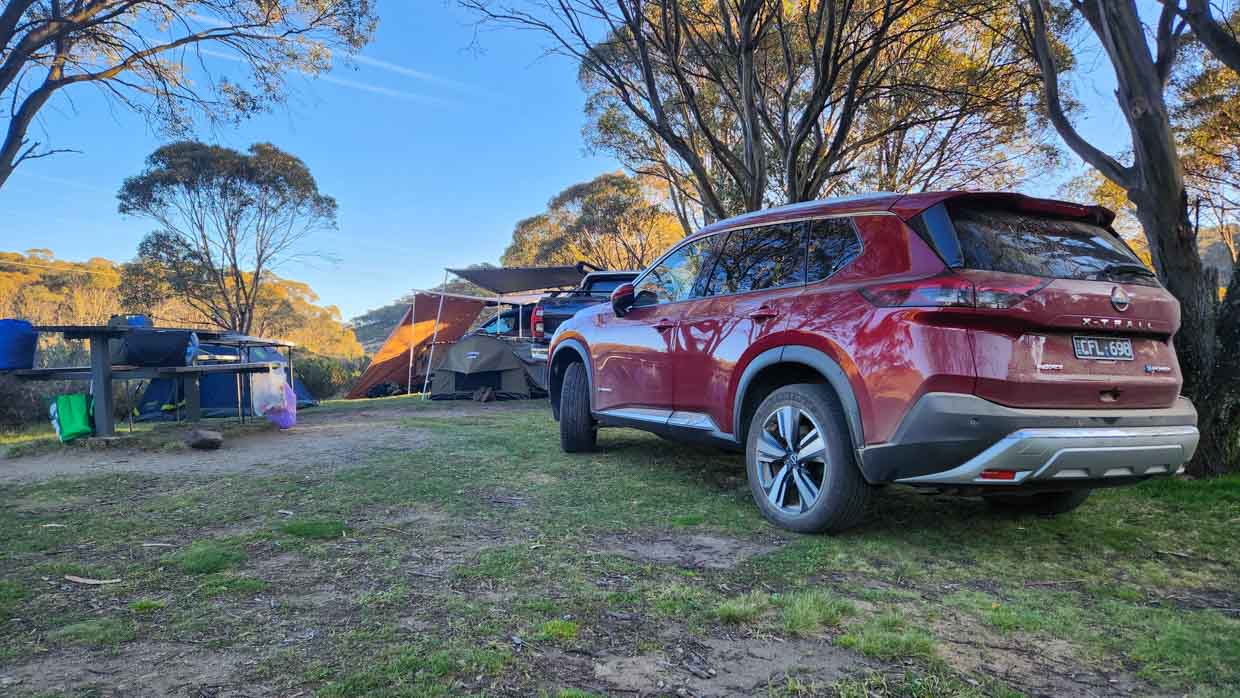
Eventually I did arrive at my destination and in doing so the X-Trail added another key capability to its arsenal in my books. Notably, it did so with its boot full of camping gear, beer and all the other essentials required for a crisp and quiet night by the river.
Come daybreak, though, it was time for the crew to make our begrudged return to civilisation.
I’ll admit it was a bit infuriating watching my friend’s Mitsubishi Pajero Sport and Toyota Hilux fly along at twice the speed on the return trip but the X-Trail rewarded my patience and we landed back on the blacktop without incident.
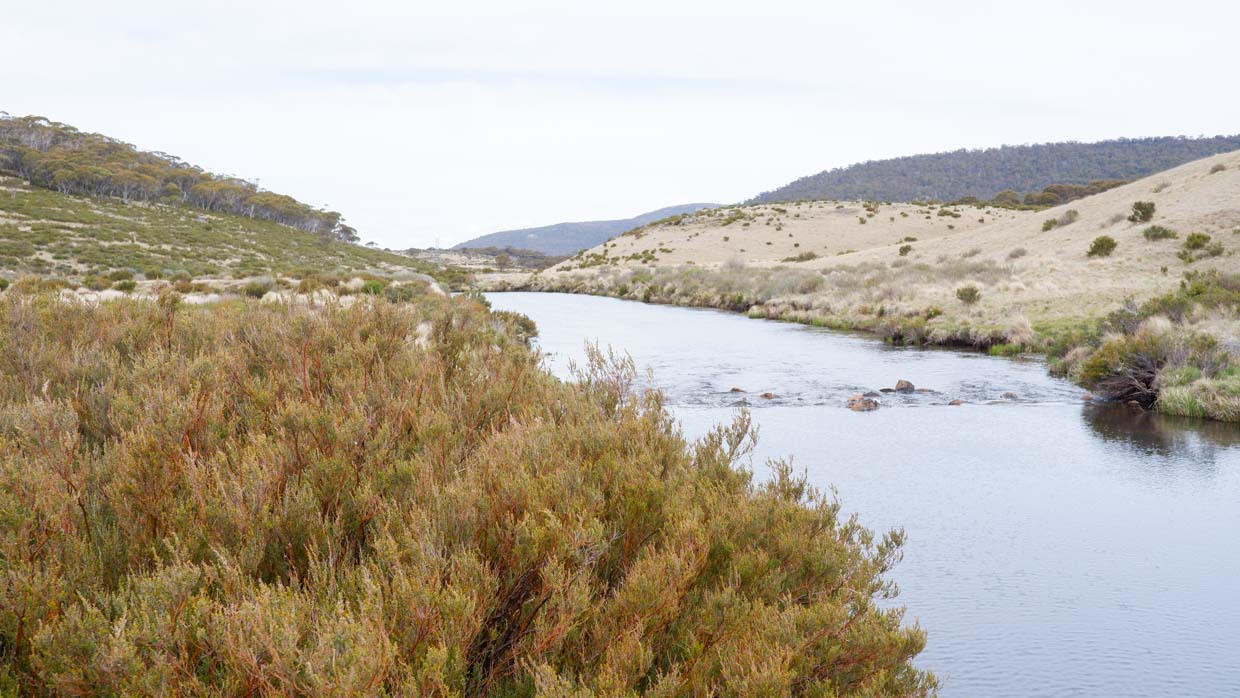
The trip was a success for the X-Trail and a curious exploration into how electric motors perform on loose surfaces, but there is clear room for improvement here.
Like many, I’ve fantasised about the prospect of a ‘Warrior’ version of the X-Trail by Aussie tuning house Premcar, which has successfully spawned the Navara ute and Patrol 4WD wagon.
Nissan, too, has said the X-Trail is under consideration for such a program alongside the larger Pathfinder. That’s to say nothing of the snow-track clad Mountain Rescue Concept that debuted earlier this year. So it’s clear that I’m not the only one that thinks this midsizer has potential for more.
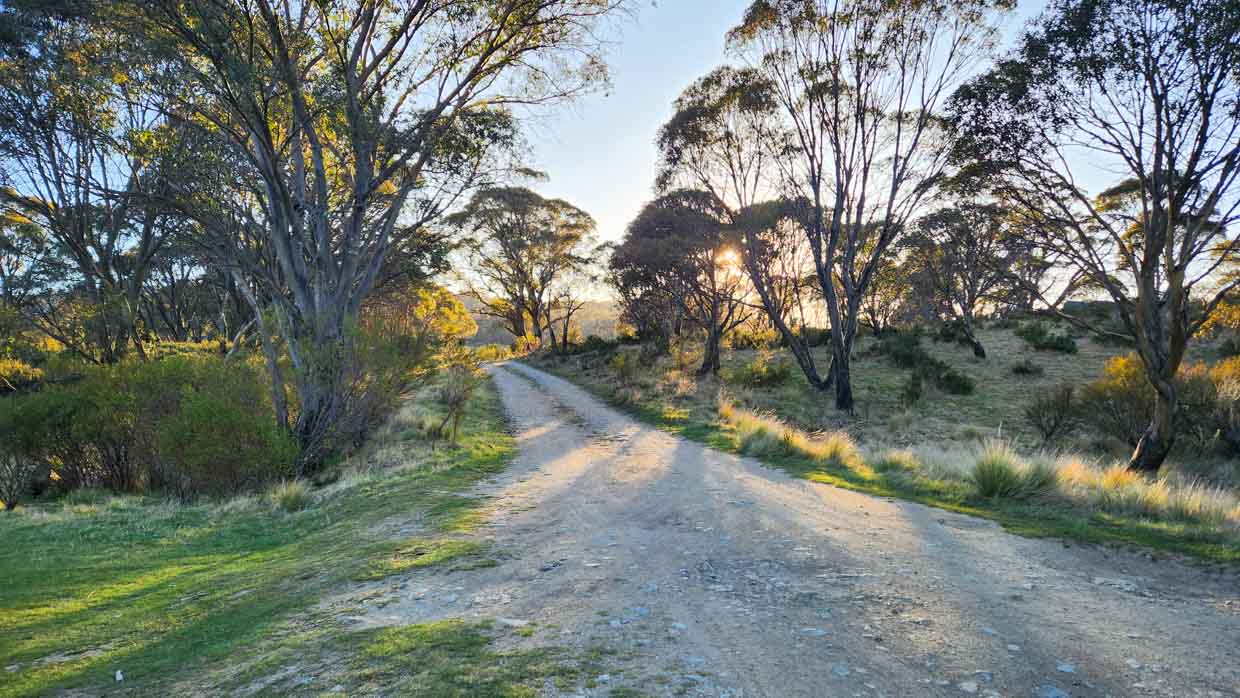
In recent weeks Nissan unveiled its N-Trek grade for the X-Trail, which goes some of the way.
Based on the ST-L grade, it features water-resistant synthetic leather seats and chunky tyres on its 18-inch wheels, though the availability of a FWD option shows the brand isn’t ready to commit to the mission fully right now.
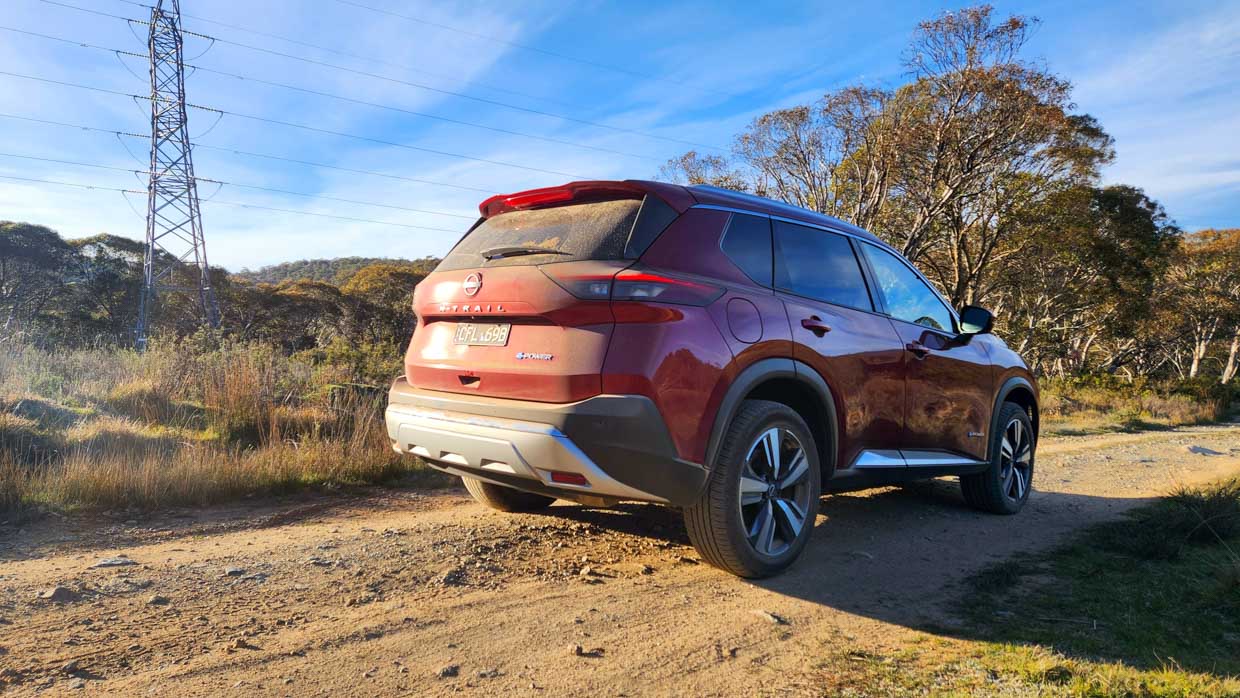
For now the Forester still remains the go-to vehicle for those looking for an adventure vehicle without hopping into a full-fat 4WD. Its crown isn’t steadfast however, with its poor fuel economy no doubt a menace to the family holiday budget.
So, with development of the next generation Y63 Patrol all but over and the off-road engineers finally free, I’d urge just a few to wander over to the X-Trail and help realise its potential.
After tipping over the 10,000km mark in our X-Trail long termer it’s now time to take Nissan’s dealer network for a test drive, but did we like what we found?
“Ah bugger, that’s not good” I thought to myself as my first servicing reminder bonged onto the display halfway through our return trip back from Brisbane to Sydney.
I could have sworn the intervals for the X-Trail were 15,000km but alas I was wrong, with Nissan still restricting buyers of the X-Trail to fairly limiting pit stops every 12 months or 10,000km.
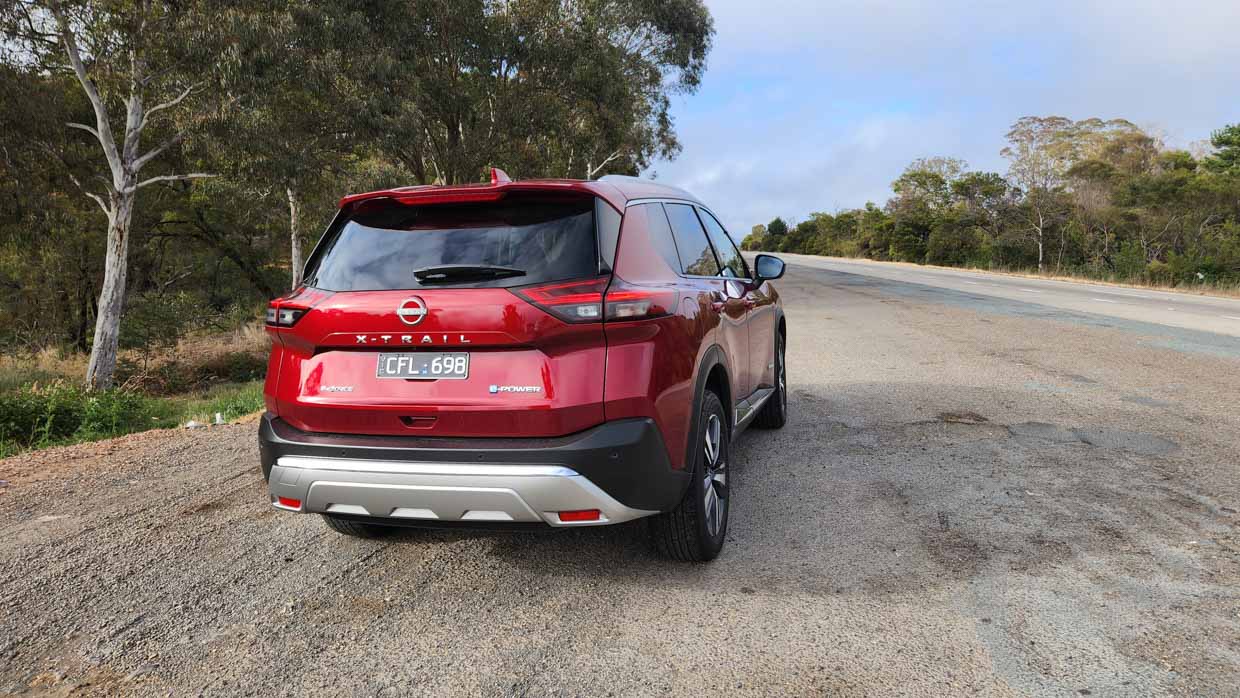
It was still my fault for forgetting, but in a big country like Australia I can’t be the only one to be caught out like this, can I? Regardless, it was time to take the X-Trail to the mechanic.
I must confess, I generally don’t like getting cars serviced thanks to a string of bad experiences as a young lad. At best, servicing a car is a painless exercise, at worst it’s an expensive and tedious day-ruiner.
But….. it’s also of critical importance in maintaining a motor vehicle, and having a trusted mechanic who quotes you fairly and treats you with respect can make all the difference.
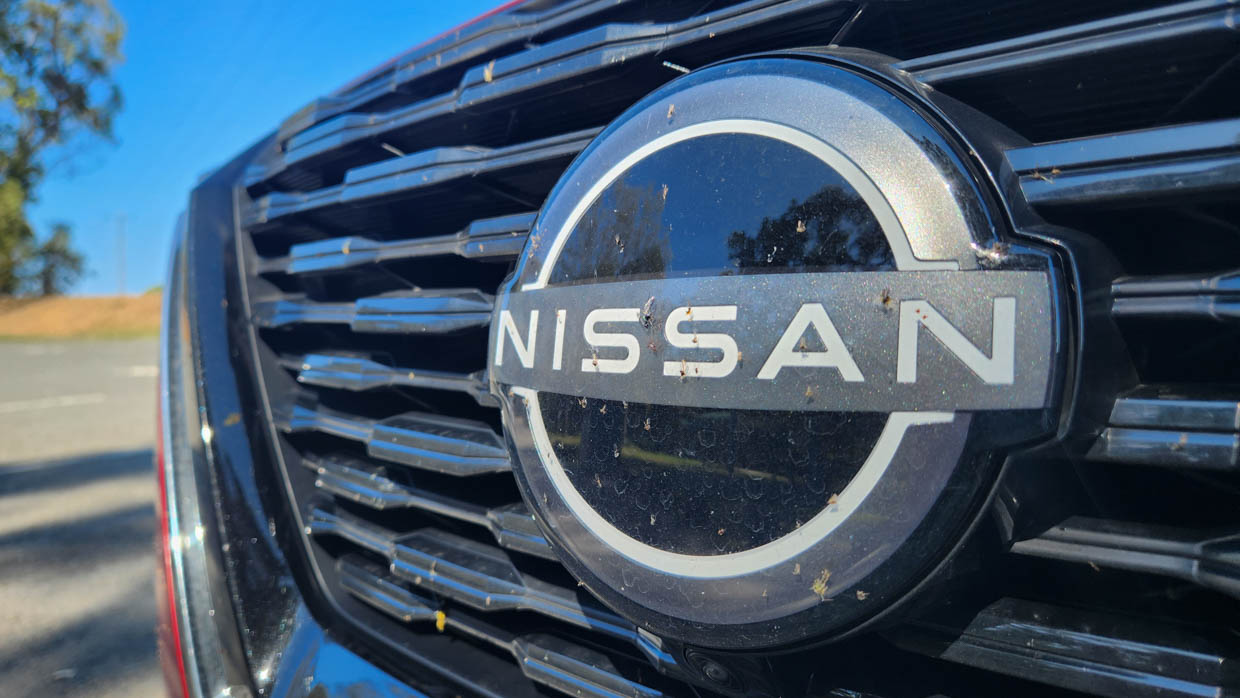
Most manufacturers worth their salt offer a capped-price servicing program, as the time the work was undertaken late in 2023, Nissan offered a six year/60,000km deal.
Furthermore, at the time of servicing our X-Trail E-Power, prices were capped at $2324, or $2092 if you go for the prepaid service package.
As of December 31st, 2023 it’s now dropped to $2244 and $2020 respectively, reflecting a small discount in a wake of criticism of its expensive prices in comparison to market leaders such as Toyota and Honda. However, the cap has now reduced to five-years/50,000km.
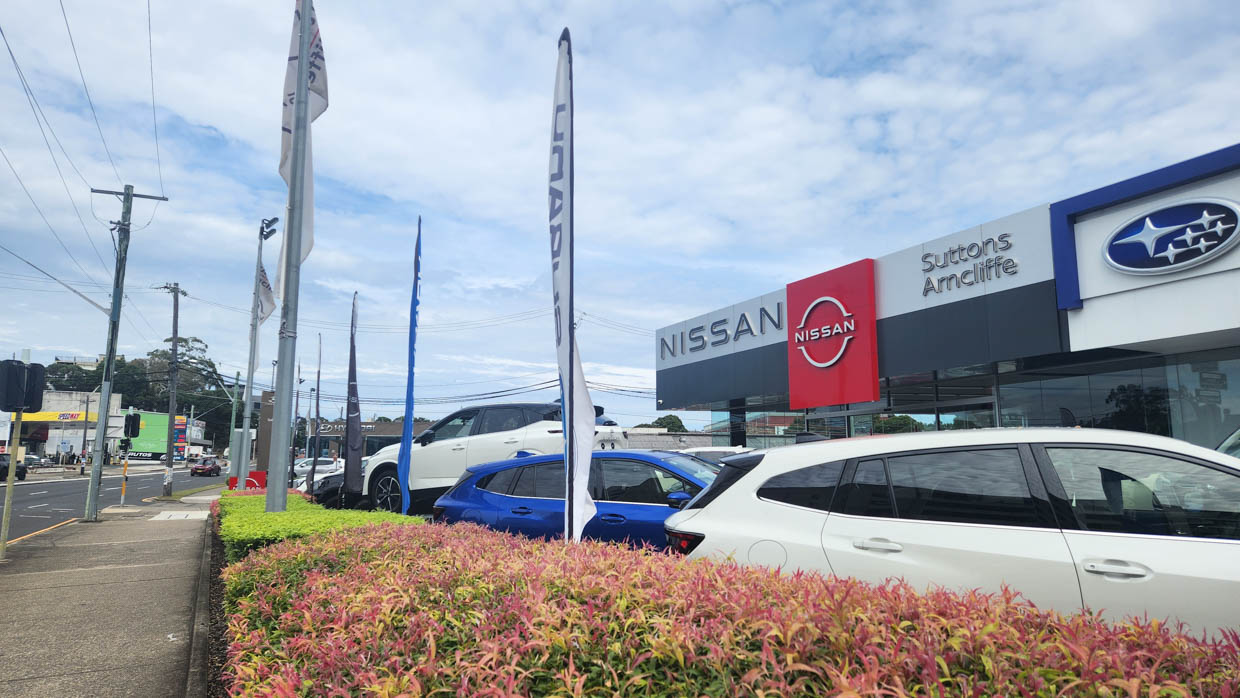
Nissan offers online booking but I’m a bit of an old soul so I picked up the phone to lock in a time for my X-Trail at a Sutton’s service centre at Arncliffe. Suttons, if you don’t know, is a huge business group that also offers servicing for Subaru, Ford and Hyundai to name a few.
Arriving at the centre at 7:45am just prior to morning peak hour, a team of employees managing traffic flow desperately tried to stop the huge queue of cars from blocking up the street on the highly accessible but fast-flowing Princes Highway entrance.
It was impressive to watch as cars were sorted and signed off one after another, I quickly explained the job required (as previously stated on the phone) and exited stage left.
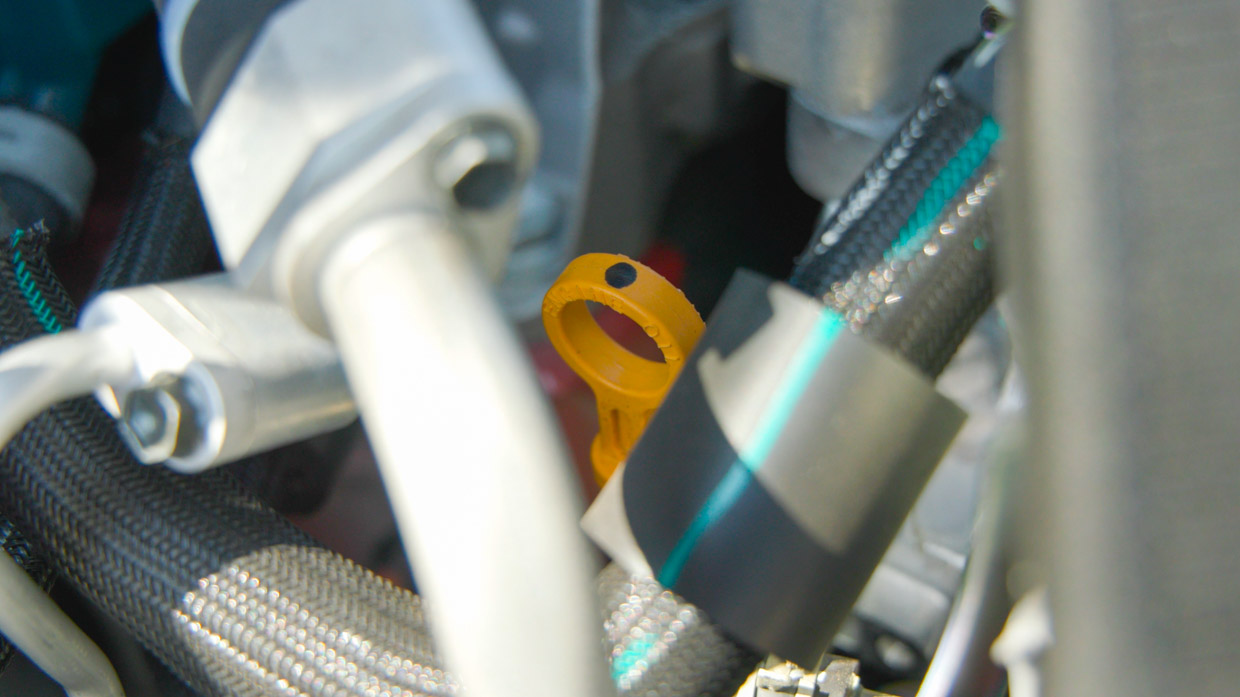
In an ideal world, I would have then transitioned straight into a loan car, but after learning these were not only booked out for months and would have tacked on an extra $45 to the bill, I opted for the complimentary bus instead.
It’s rude to complain about things given out for free, but I was a bit surprised that my commute back to the office took over an hour when it was roughly 15 minutes by car, even in traffic.
Still, it beats walking.
Just four hours later, a text message popped up on my phone notifying me that the service had been completed.
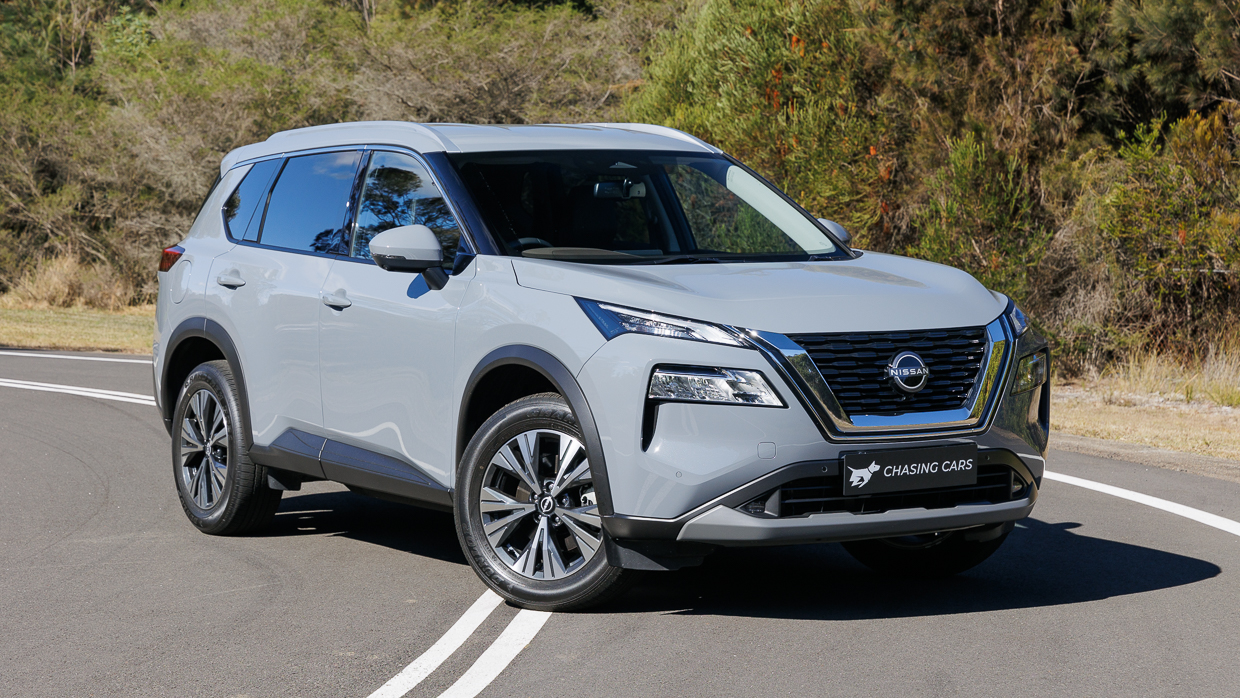
Pictured: the ST-L petrol variant, which is slightly more expensive to service than our Ti E-Power
The capped cost of servicing my 2023 X-Trail was $365 for the first 10,000km check in and I’m happy to report that Chasing Cars didn’t pay a dollar more. It’s notable that the servicing costs of the 2024 E-Power X-Trail are actually cheaper than the petrol, so you aren’t paying a premium twice.
Not covered in the service was a wheel alignment, which I had requested earlier that morning but I was told this would demand a separate fee in excess of $100 and would be performed at a wheel and tyre shop down the road anyway, so I pushed that back to another day.
Otherwise, it was a fairly standard check up, with the mechanics swapping out the oil and making sure everything was as it should be. The only minor hiccup was that I was told I needed to drive the car more often as the battery health was low.
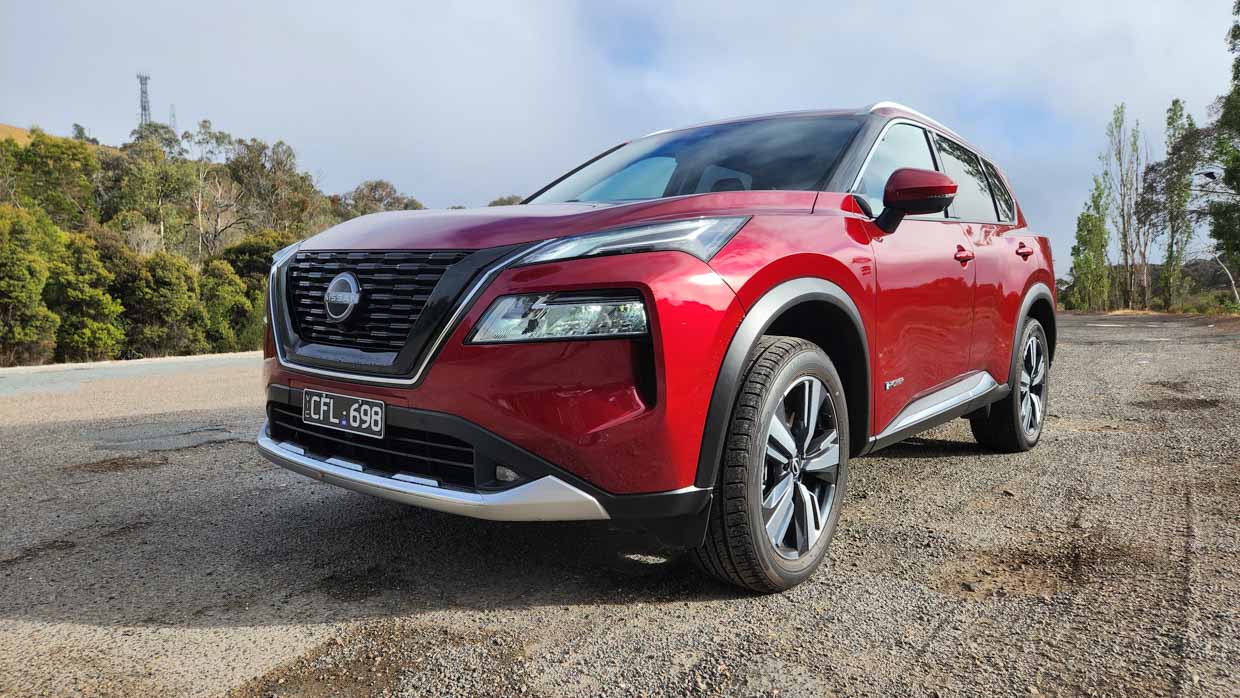
Being that I had just completed a circa 2000km round trip to Brisbane and back, I contested this finding, and a secondary check found that the battery was actually at 95 percent health, with the initial inaccurate reading blamed on a faulty reader.
It’s a reminder that often a good worker is only as good as his tools allow him.
It was a small mistake, and a replacement battery likely would have been covered under warranty, but outside of Nissan’s five-year warranty coverage period you can see how this could potentially have resulted in a customer forking out some hard-earned cash unnecessarily.
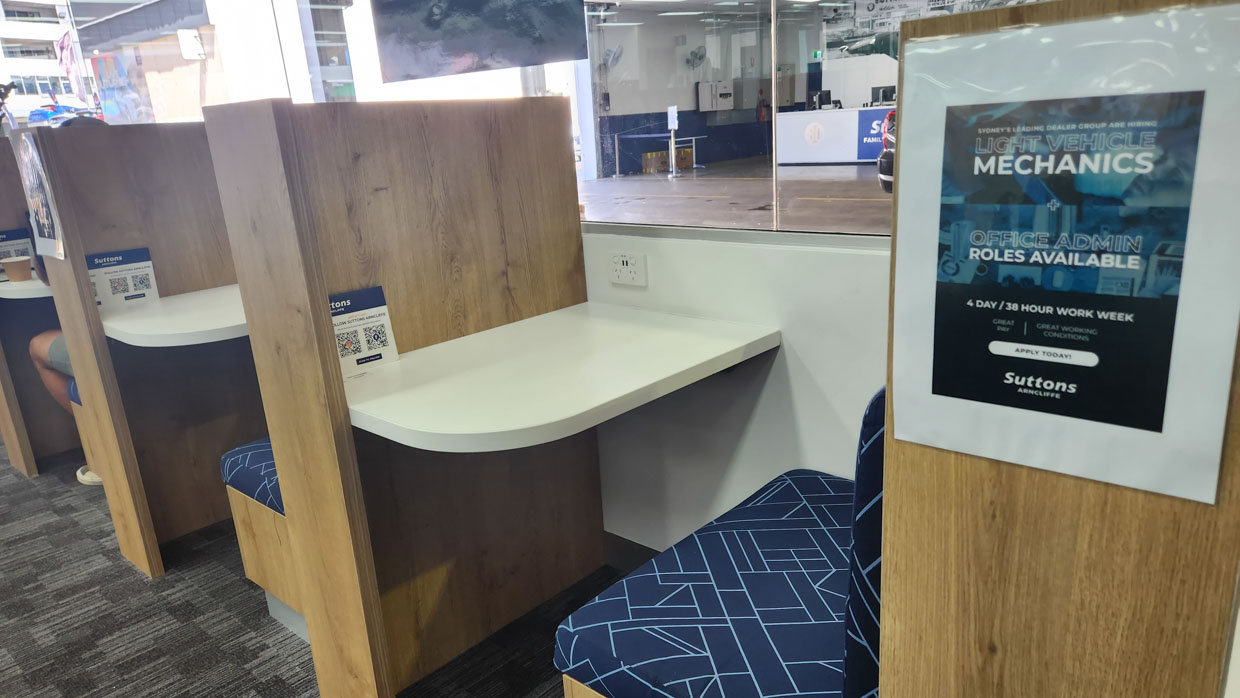
Back inside the office I tapped my credit card and came to the realisation that I probably should have just stayed here for the mere four-hour wait, as the waiting room was far more lush than the stuffy little rooms filled with dog-earned car magazines, which mechanic workshops are typically known for.
In addition to the swath of big TVs and couches, visitors had access to isolated working booths with power-plugs for charging and free wifi to boot. Plus, there was a coffee machine, which I tested in the interest of good journalism, and I’m happy to report that the experience was ‘not bad’.
Overall, it was a sign to me of how far service centres have come in the last few years. And although my experience was limited to just one visit – and the 3.9-star rating on Google suggests others haven’t always had a great time – I’d be happy to go back in for a second visit.
One Nissan SUV, three people and a mission to visit the sunnier sands of Australia’s upper east coast, it’s time for the X-Trail to show its road-tripping chops
Every six months or so when editor Tom Baker puts the question to me about preferences on my new long termer, I only really have one that’s important: it needs a big boot.
It’s not just because I’m guilty of snapping up the odd bargain on Facebook Marketplace and need somewhere to load it up, but more so as I have a family of four (one of which barks) and a real love for the great Aussie road trip.
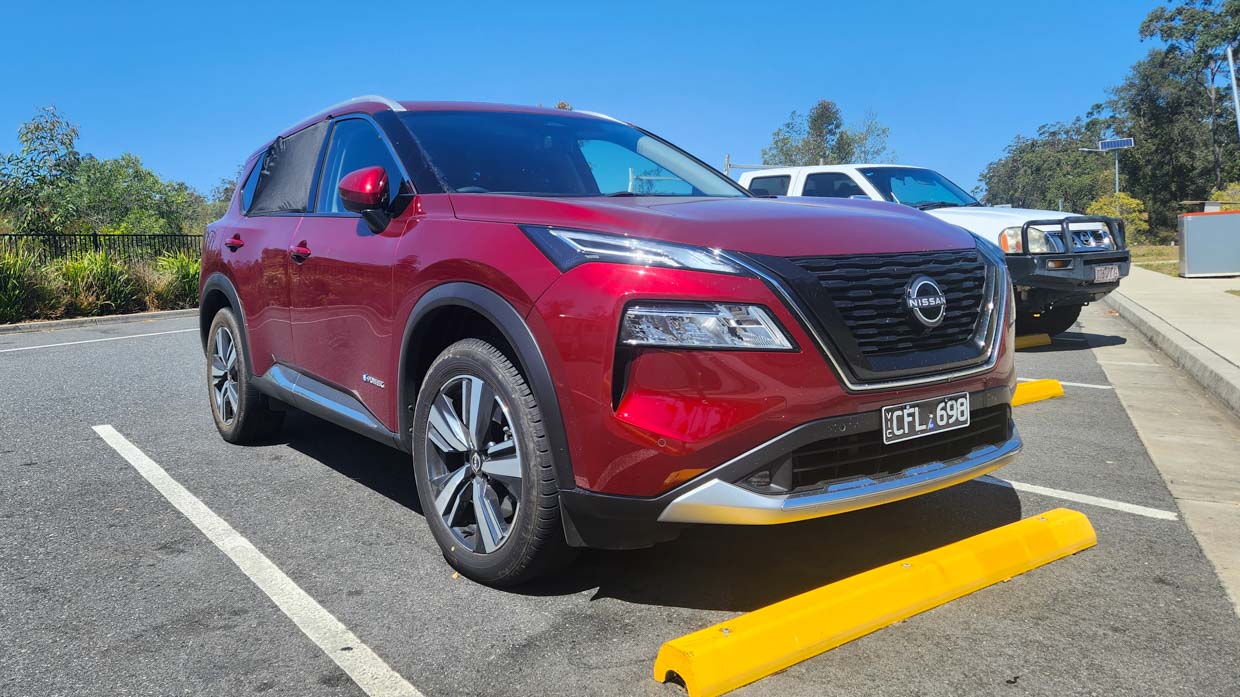
Those who have read of my time with the Subaru Outback and Mitsubishi Outlander won’t be surprised at this revelation and I’m of the belief that it’s an important test for an Aussie car, challenging everything from highway fuel economy, to comfort and indeed luggage carrying capacity to the extremes.
For the X-Trail’s debut on the open road, my family and I headed up north to Brisbane for a week-long holiday in one of the most picturesque locations this country has to offer.
The crica-900km journey is a shorter drive than I’ve done in previous long termers but still plenty far enough to properly stretch the X-Trail’s proverbial legs.
It was a journey where the X-Trail impressed and that achievement started before we even got out the driveway.
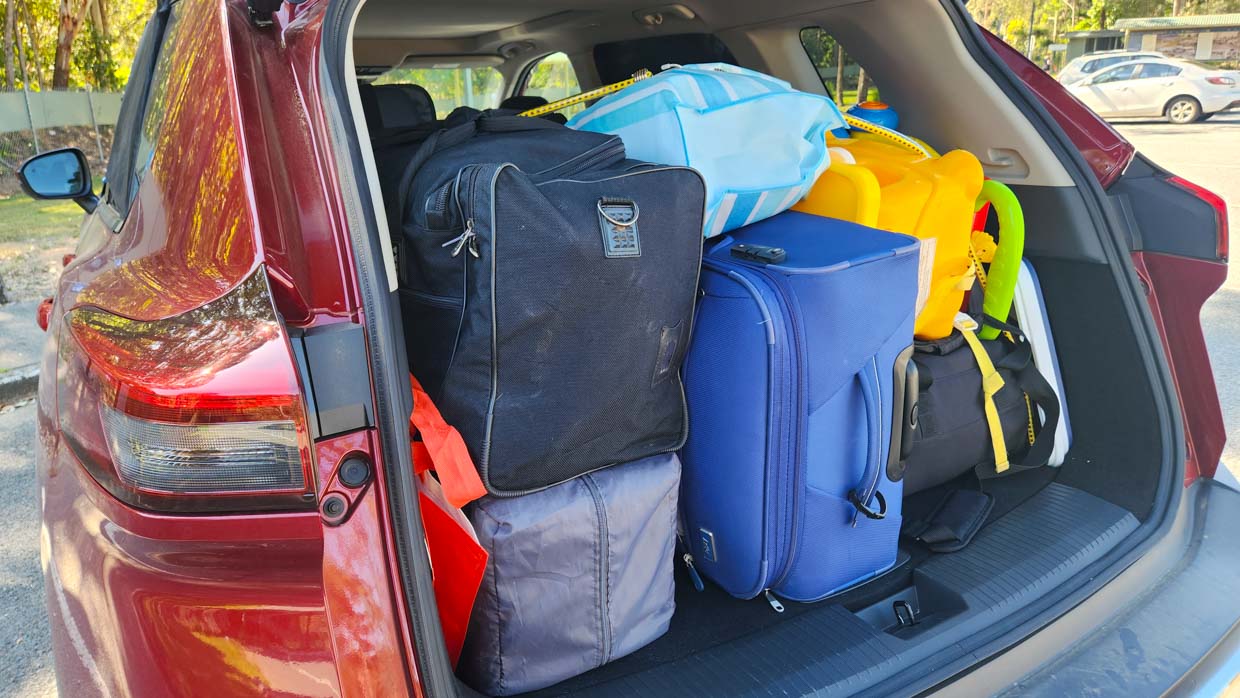
The boot of the X-Trail is decent enough, if perhaps not best in class, but what allows you to take full advantage of the interior space is the 60/40 split-folding and sliding rear seats.
Thanks to the spacious second row of the X-Trail, I still had room to position a rearwards-facing baby seat another 10cm forward until it was almost up against the front passenger seat, with the other side of the rear seat free to move a full 30cm-ish forwards to extend the boot capacity quite considerably.
With the rear seats forward, a sunken storage pocket emerged below the standard height of the floor, big enough to stand a pram up on its side and leave room for a week’s worth of luggage for three people, baby aids and other paraphernalia.
The height-adjustable load floor, four tie-down points and 12-volt socket are other good additions to this space, though I maintain the lack of a spare (of any kind) is a huge miss for a family vehicle, as per my previous update.
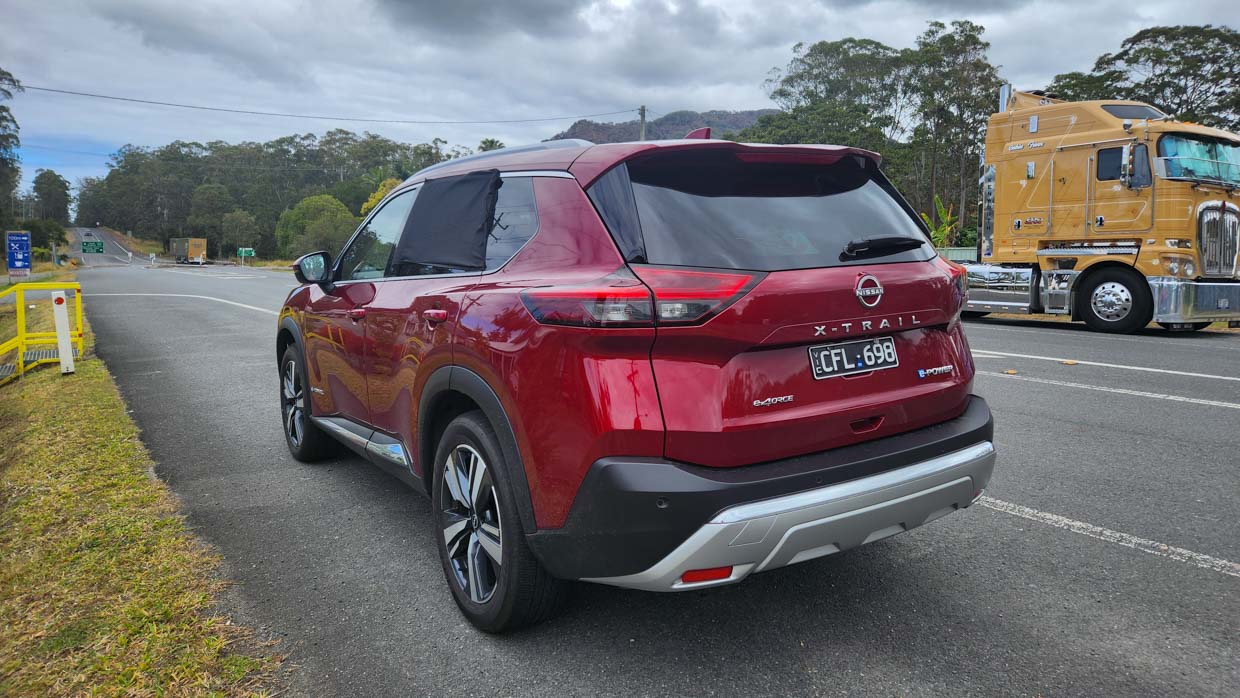
I should also add that another factor that made packing a bit easier this time versus other trips was the fact that my dog Buddy stayed at home. Sorry mate, next time, I promise.
My wife and I left early in the morning with naive hopes that our one-year-old would simply sleep through the first half of the trip; hope fed by the whisper-quiet nature of the X-Trail’s hybrid system as it silently glided out of the driveway.
Preparing for the long haul, we shuffled ourselves into our seats and looked out as the LED headlights lit up the highway ahead, as the silent acceleration gave way to the low hum of the three-cylinder engine as we approached the 100km/h limit.
Solid headlights are an underrated feature of a car and I’m happy to say the X-Trail possesses such a boast. They may not be the most advanced but they are adaptive to oncoming drivers and are fundamentally good, so you can leave that lightbar at Supercheap Auto.
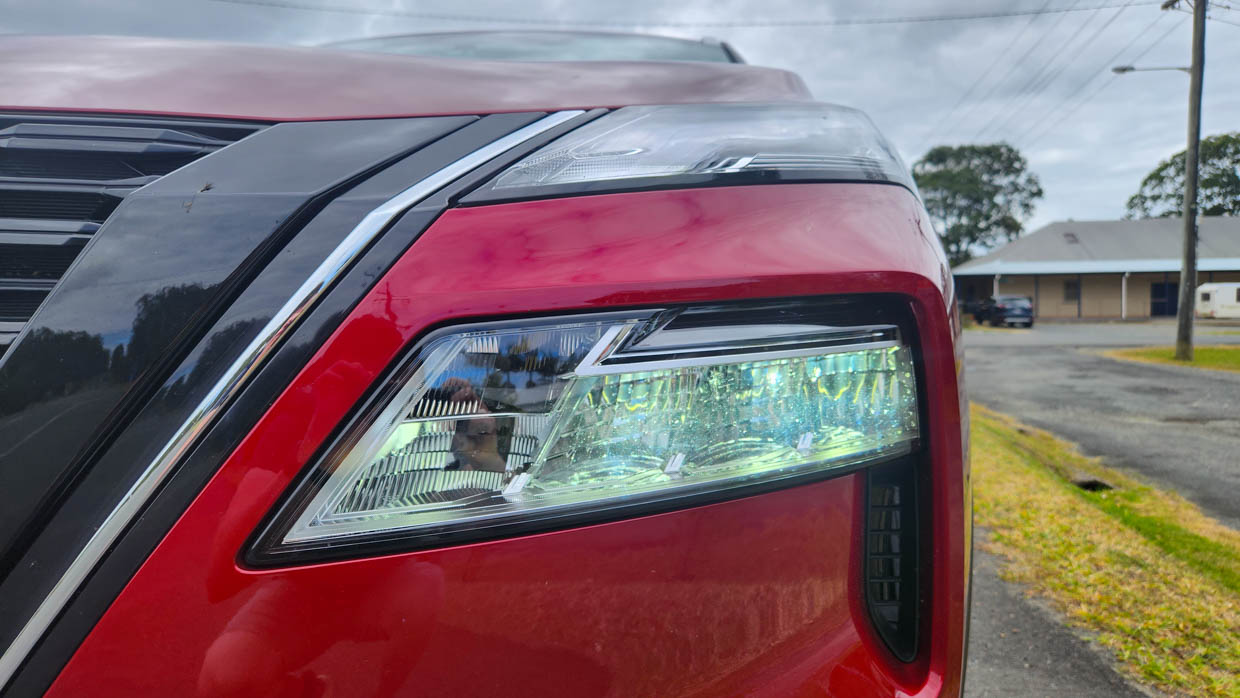
Aside from my own daft forgetfulness to close the panoramic sunroof when driving through the well-lit tunnels (which woke up the baby less than an hour into the trip) our journey started off smoothly, with the adaptive cruise smoothly accelerating for gradual hills and lifting off the throttle on the way back down.
With forward movement taken care of, this lazy driver then turned his attention to the next modern convenience – steering assistance – and I found myself in a bit of a conundrum.
You see, modern driving aids carry lots of confusing names, made worse by the fact that brands like to give these features their own focus-roomed moniker. But in this discussion, we are dealing with two types: lane keep assist and lane centreing.
In the X-Trail, the former is pretty relaxed, and better for it I think. It’s one of the few systems in modern SUVs that doesn’t make a complete menace of itself once you get out onto country roads where the roads are windy and the guidelines all presumably laid at 4:55pm on a Friday.
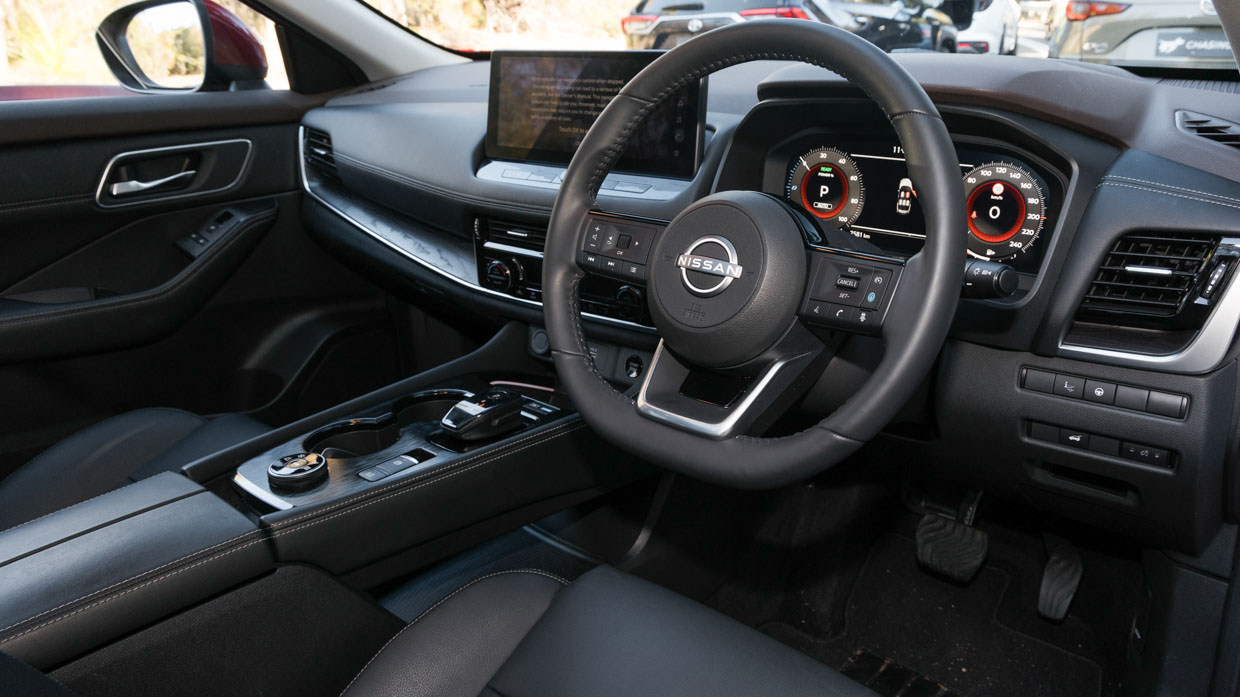
Fine. It’s perhaps a bit too relaxed for taking the wheel at highway speeds then. Time to turn on steering assistance, which I find to be brilliantly accurate – and they rarely are.
The problem is, the bloody thing is so good at its job I rarely need to correct it, which prompts the X-Trail’s internal computer to think I’m not holding the steering wheel at all, and bongs at me incessantly unless I have my hands at nine-and-three the whole time – which gets a bit tiring after eight to nine hours on the road.
Eventually I found a compromise where I rested my hand on the bottom of the wheel in such a way where I’m constantly steering it out of the lane slightly, so the car will then steer me back into the centre.
It strikes me as deeply ironic that car makers have gotten so used to these steering assistance functions being terrible and needing constant correction that they haven’t correctly prepared for circumstances where drivers might actually be able to relax and trust the car. And thus, I turned it off.
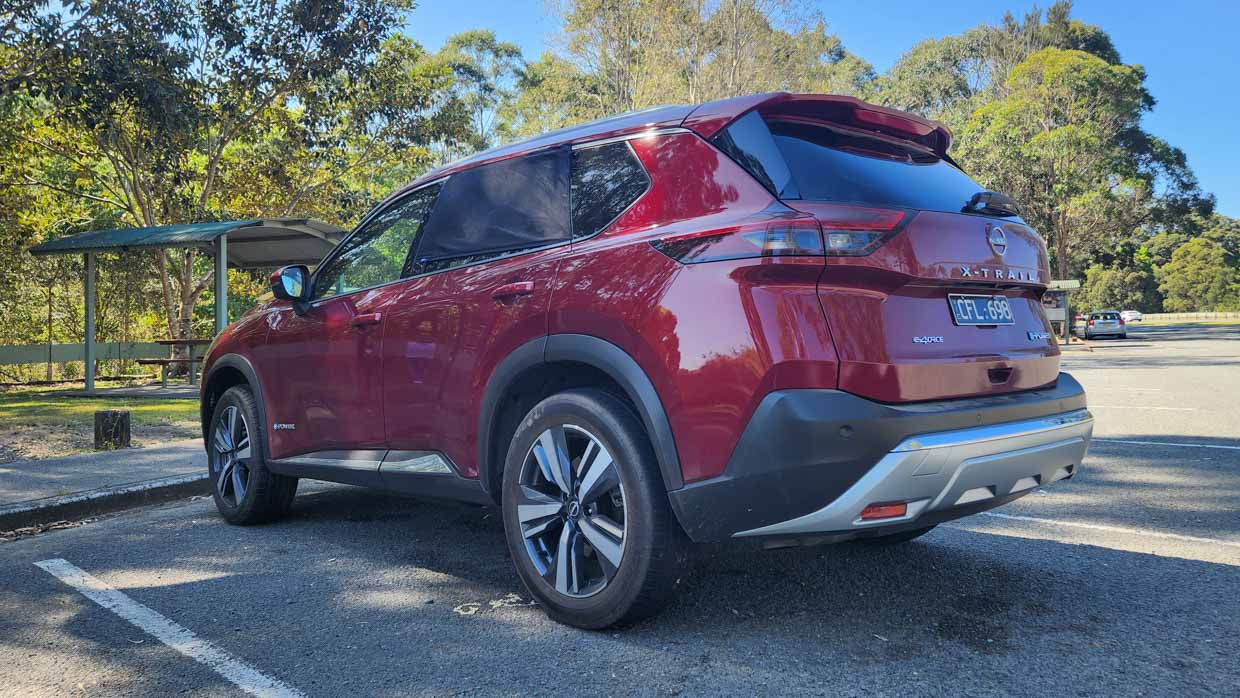
By this time I was getting a bit hungry and tired, so I passed the baton to my wife who took the wheel of the X-Trail for the first time while I reloaded my energy via a burnt double-shot latte and lob-sided b&e from your favourite fast food retail chain.
As my reference point to normal ‘non-car’ people, I was pleased to see how quickly she picked up the controls, found cruise control and switched it on; before she remarked that she liked the smooth take off from the electric motors as we pulled back onto the highway.
In a complete contrast from my usual Adelaide-Sydney trip, the terrain between Sydney and Brisbane is anything but flat. The hills rose, fell and twisted along the east coast in a beautiful display of what this country has to offer.
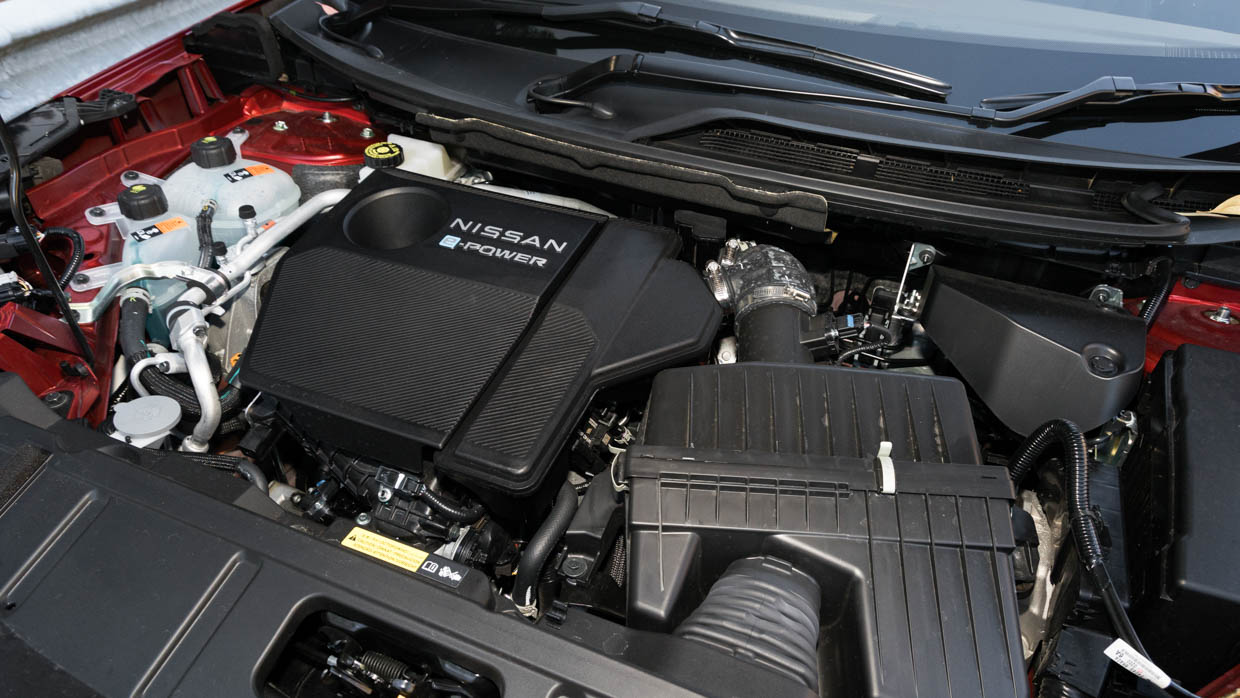
The Nissan’s ‘E-4orce’ system is at its best between 0 to 80km/h, as above that the low hum from the range-extender petrol engine turns into a bit of a clattery panic as it tries to feed the front and rear motors enough electricity.
But noise aside, it has the guts to help the loaded X-Trail overtake up hills, if perhaps not with as much pace as my previous long termer, the unusually powerful 185kW/450Nm Mitsubishi Outlander PHEV.
A few more burnt lattes, tantrums and back-seat vomits later we finally arrived in Brisbane after nine hours on the road, and the good news for the little Nissan was that I wasn’t dying to get out either.
I’ve previously praised the suspension for its supple nature and although the seats could use more support, in my opinion they are more comfortable than many others in this segment.
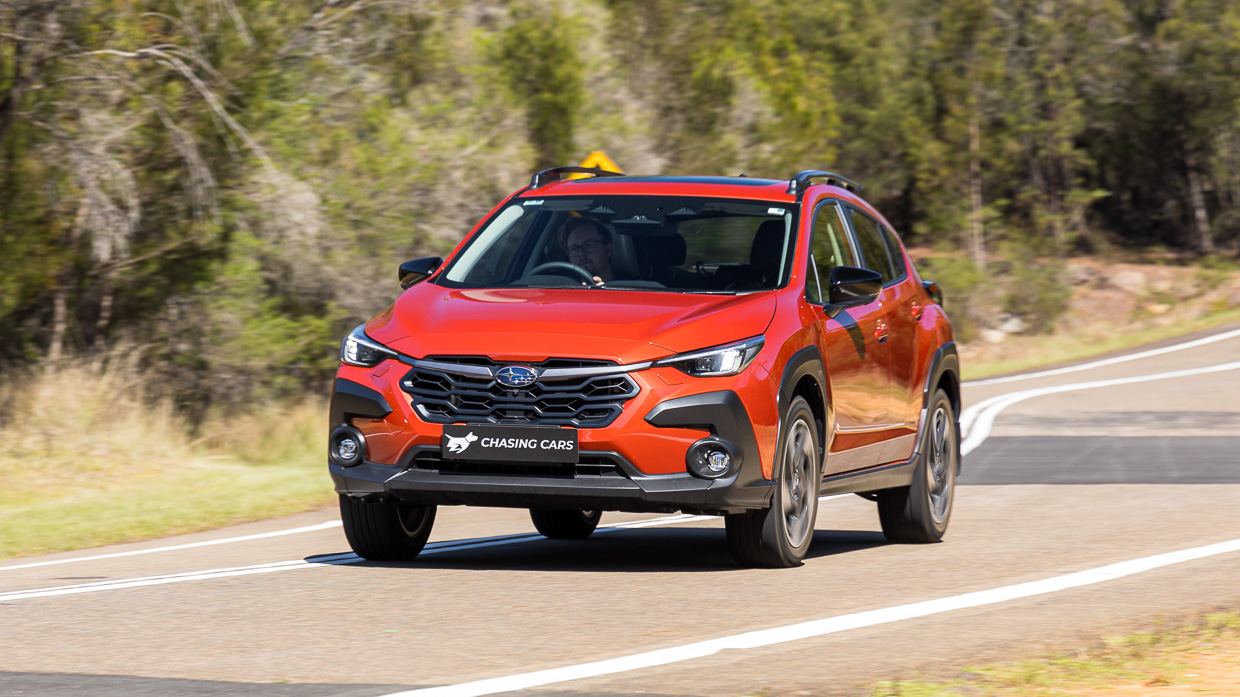
By a strange confidence, my colleague Zak Adkins was completing the same journey in his Subaru Crosstrek long termer
After dropping off the family and unloading our luggage into our hotel room I went to top off the tank to get an accurate fuel reading of the journey and found myself with somewhat mixed feelings.
Travelling there and back, I averaged 7.5L/100km and I was typically loading up the tank with 98-octane fuel as the preferred 95-Ron grade was hard to come by.
It does make me wonder if hybrids are best suited to long-distance travel such as this, and if Nissan shouldn’t have dropped the diesel option for this generation of X-Trail, which claimed 6.0L/100km combined in the previous generation compared with the 6.1L/100km average quoted for this model.
Although not quite apples to apples, it’s notable that my colleague Zak Adkins took the same trip with his smaller and lighter-loaded non-hybrid Subaru Crosstrek long termer that same week, and saw an average of 6.9L/100km on cheaper 91-octane fuel. Hmmm….
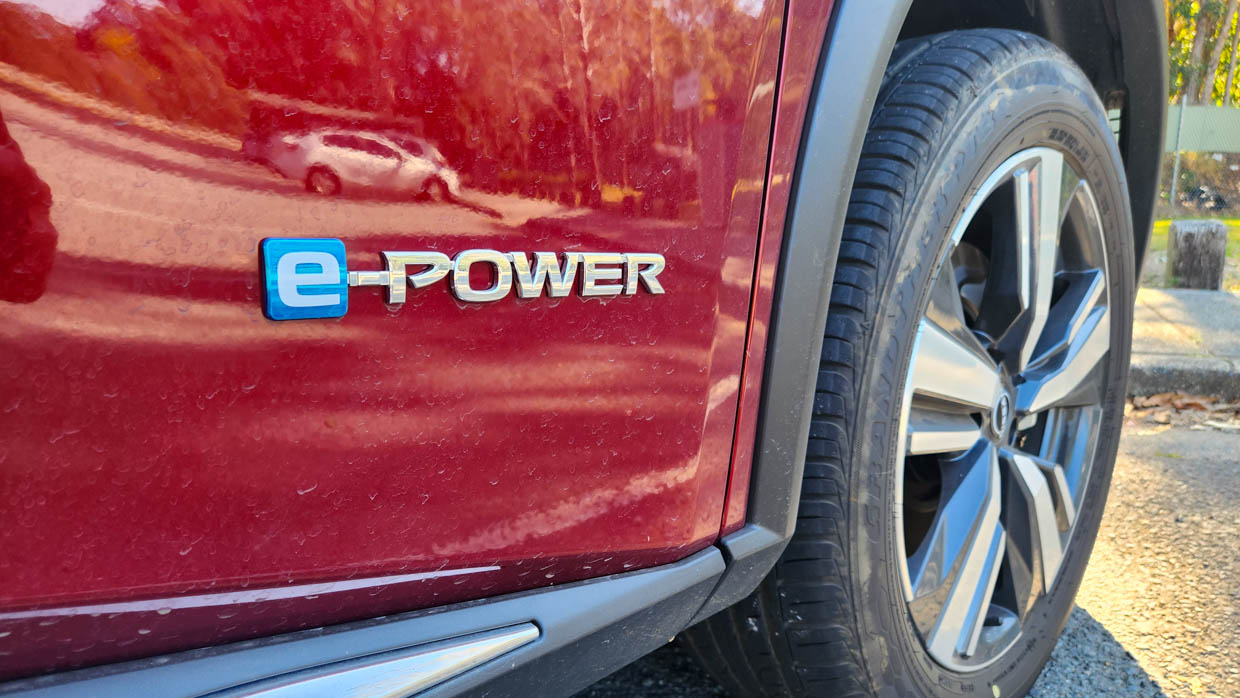
Nissan’s fuel economy trip computer on the X-Trail also needs to be given a bit of a reality check, as it was around 10 percent opportunistic with consumption figures, compared to those calculated by use based on the exact petrol in versus kilometres driven.
Follow-up fuel consumption testing revealed the trip computer was between seven to 15 percent out of whack, with the in-car reading becoming less accurate on more significant, full-tank fill-ups.
It’s a dim note to end on what was overall a positive experience on our road trip. But to finish on a good note, I must give credit to whoever chose those hard-wearing leather seats in the engineering department, as baby vomit comes straight off in a single wipe!
Our first meeting with this X-Trail was deflating, though not in the way you might think. So why do so many SUVs miss out on this basic feature?
As a fundamental principle, there are few things more important to a car than the four wheels on which it rolls.
Without this crucial number of wheels, you’re bound to see an awful lot of sparks and chaos. Generally, it’s just not recommended.
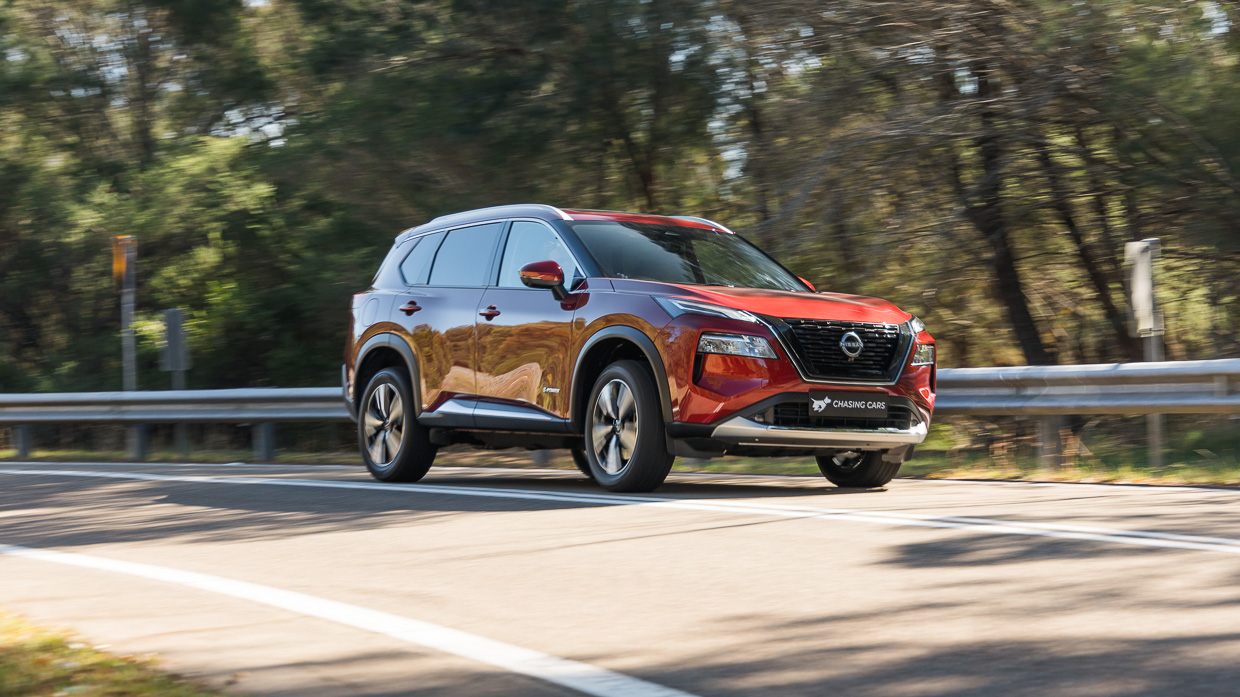
It’s for this reason that soon after the invention of the automobile, early manufacturers would fit one or sometimes two extra wheels, placing them on the running boards of the car. But in the 2020s this seems to be a principle many are abandoning in droves.
As wheels have grown in size, and so has our appetite for more storage space, the humble spare has been culled in many vehicles, sometimes they’re traded down for a smaller space-saver spare or just abandoned entirely for a puncture repair kit.
It’s easier to forgive this in some vehicles more than others. Sports cars, for example, aren’t known for their storage space so cars like the Mazda MX-5 and Toyota Supra go without – though the Subaru BRZ does offer a full-size spare as an option.
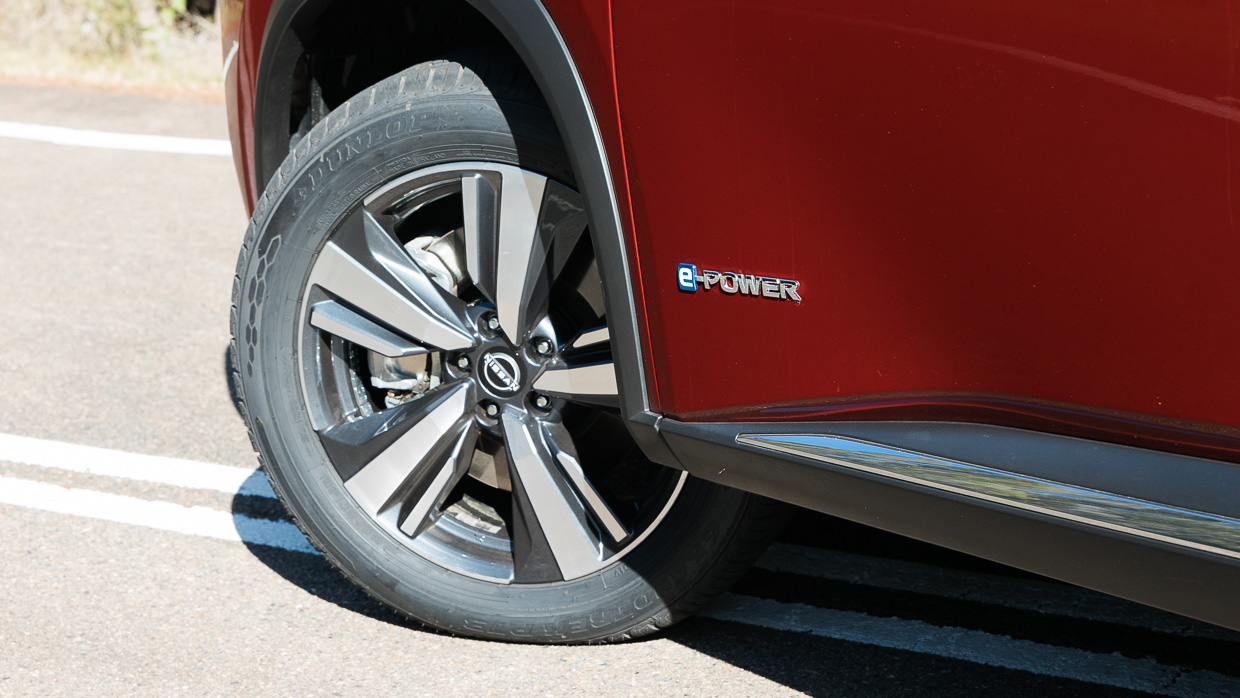
Large luxury SUVs often roll on huge wheels, with rims of up to 23-inches in size, and they too often ditch the spare. It’s an unfortunate outcome but one many buyers feel comfortable with given their (largely) urban-focused use, so fair enough.
It’s a similar story with EVs, with many designers trying to cram huge batteries inside the car to increase driving range, so the spare wheel is often the first thing to go.
But what about mainstream SUVs that a good many people buy every single day? To me, skimping on a spare wheel is a step too far.
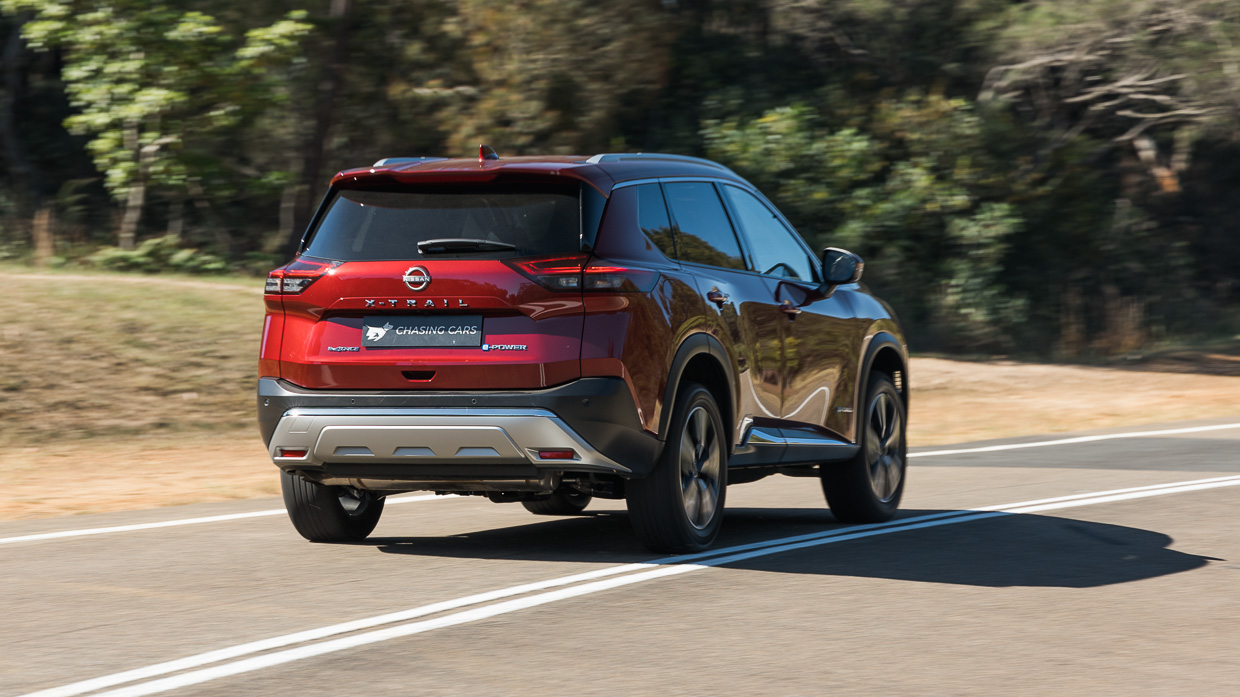
So picture the scene: it’s a sunny Wednesday afternoon and I’m taking my Nissan X-Trail long-termer out for its first drive to a nearby photoshoot location.
Upon positioning the SUV for its first shot, I note that it looks rather handsome in this mature shade of Scarlet Ember, and the 19s on this Ti grade really tie the design together nicely.
I look further down those wheels, however, and something draws my attention: a piece of glass poking out from the very top of the sideway.
You’ve got to be kidding me…
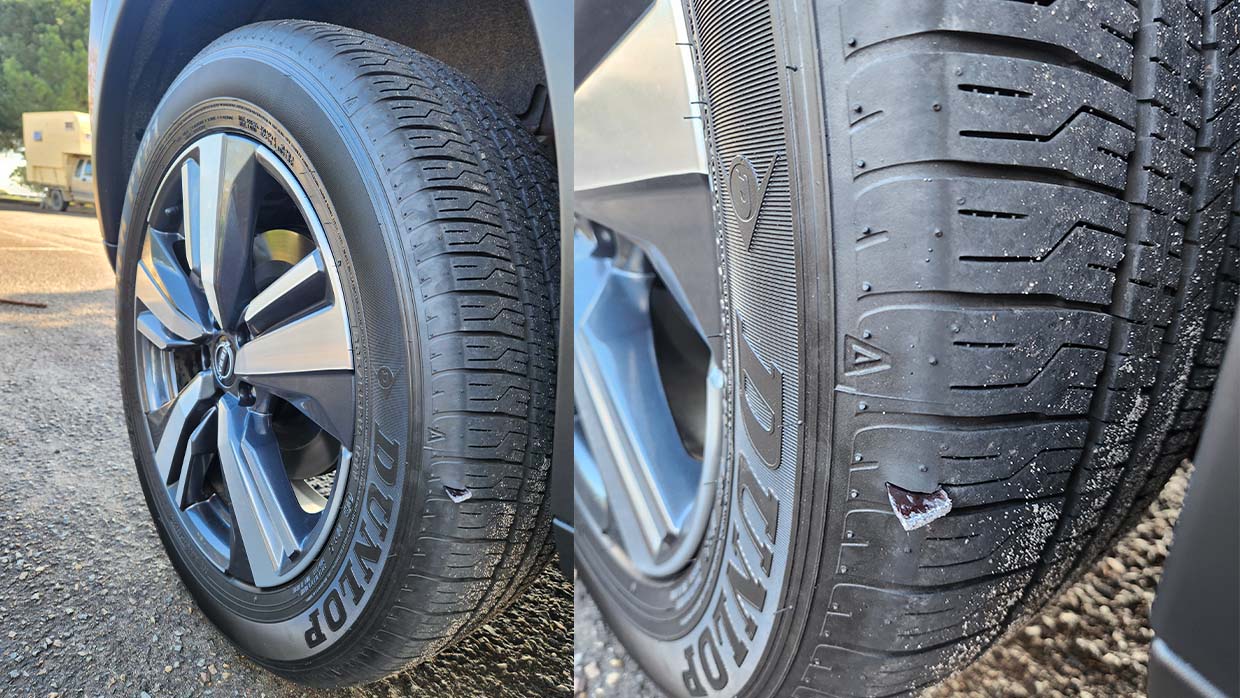
Somehow, after less than 15 kilometres of driving, I’ve managed to puncture a tyre. Something Nissan Australia would later confirm to me is a new record for press car usage.
Given how deep it was in the tyre and its tricky location, this rubbered ring looked to be a goner but I wasn’t too stressed as I knew the X-Trail would have a space-saver space.
Or at least they do on the 2.5L petrol models. Instead, the E-Power variants are fitted with a little compressor and a tube of goo to plug the puncture – assuming you can find it.
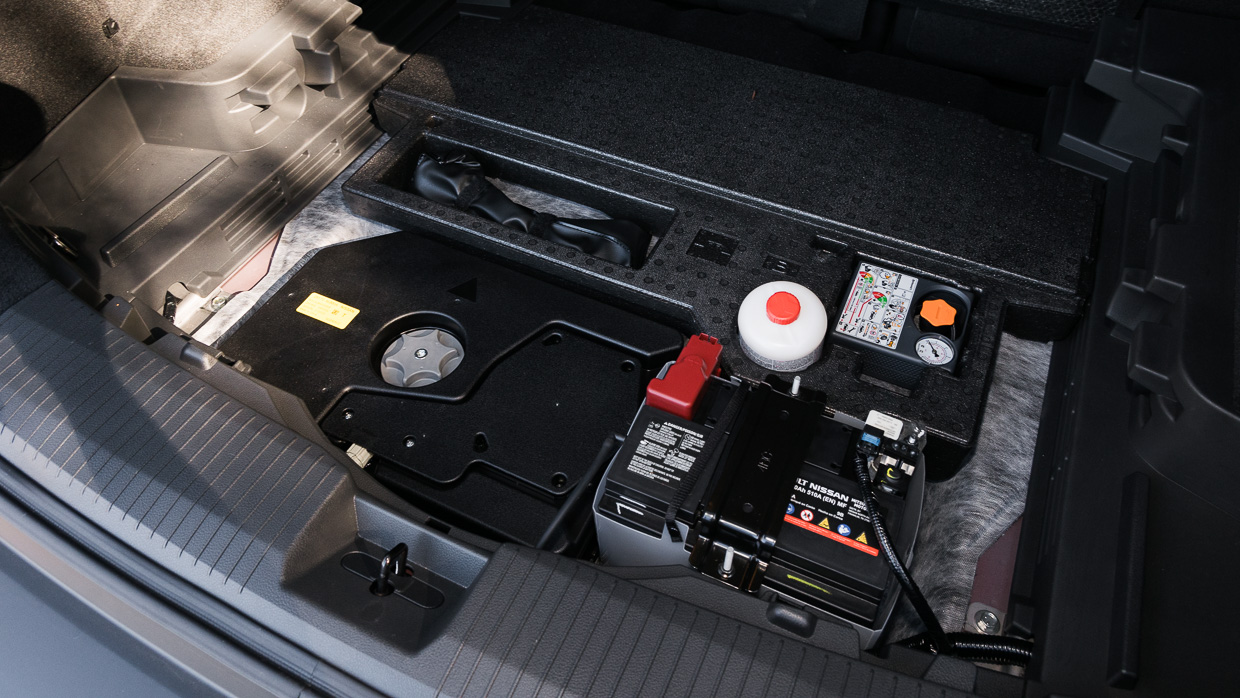
This is due to the fact that the E-Power variant has a litany of additional electronic equipment under its boot floor, similar to my old Mitsubishi Outlander PHEV long-termer.
The Mitsubishi, however, had a huge 20kWh battery pack that had to go somewhere, so while it was still a detriment, I was quicker to forgive it.
But on a hybrid with a mere 2.1kWh battery? We can do better than that I think.
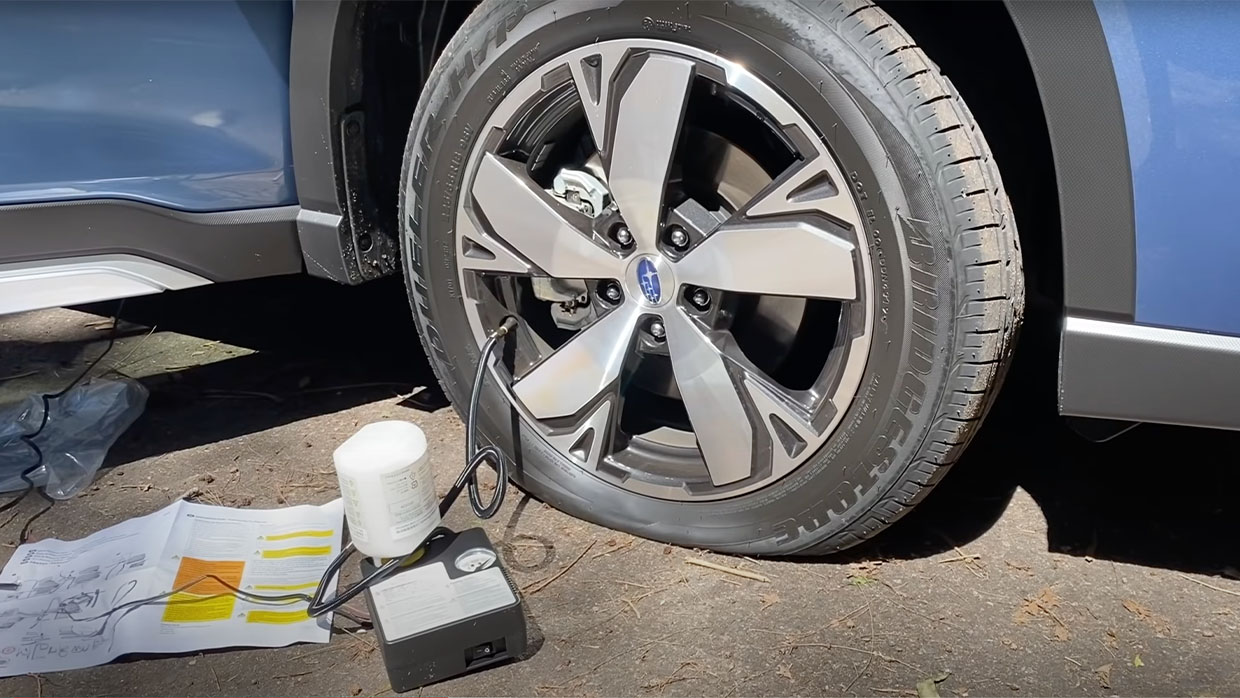
It’s not the first time Chasing Cars has been stranded thanks to this issue either. Shortly after the launch of the Subaru Forester Hybrid (which trades a full-size spare in the 2.5L petrol for a tyre repair kit) a sudden manoeuvre saw the tyre rupture without warning.
And if you’re wondering, rivals such as the GWM Haval H6, Honda CR-V, Peugeot 3008 and Cupra Formentor all share this in kind with their respective hybrid variants.
So it’s impossible then? We can’t have a hybrid system and spare wheel – not even in space-saver form? Not according to Toyota, because the RAV4 has no such issues.
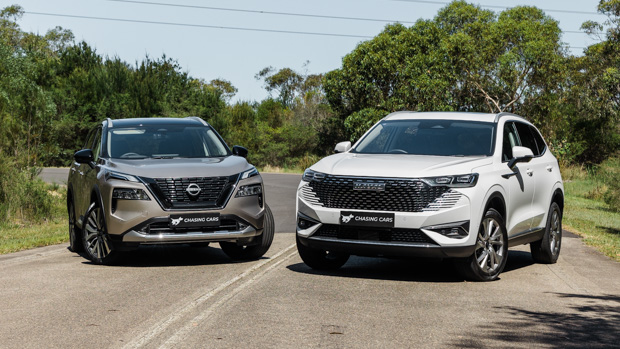
Not everyone is going to embark on long drives across the country in summer where a spare wheel can genuinely be the difference between life and death, though it should be acknowledged that many do.
But if my first 15km with this car has taught me anything, it’s that sometimes it doesn’t matter where or how you drive; sometimes you’re just unlucky and it’s simply not acceptable that so many family SUVs don’t offer this basic form of reassurance.
At best, it’s a bloody nuisance, at worst it’s a genuine safety hazard. I hope I never experience it as the latter.
With more than two decades behind it the Nissan X-Trail is officially a generational landmark, as this 20-something dad learned as he took the keys to this new X-Trail and found himself in an all-too familiar situation.
At the tender age of eight, I remember two things about a family camping trip somewhere far enough outside the city limits of Adelaide to warrant a good nap on the way there.
The first was my dad, not a man known for Gandhi-like patience and understanding, stumbling outside our tent at an ungodly hour of the morning, arching up towards the tree tops and screaming at a flock of cockatoos to “shut the f*** up”. Prompting some raised eyebrows around the caravan park.
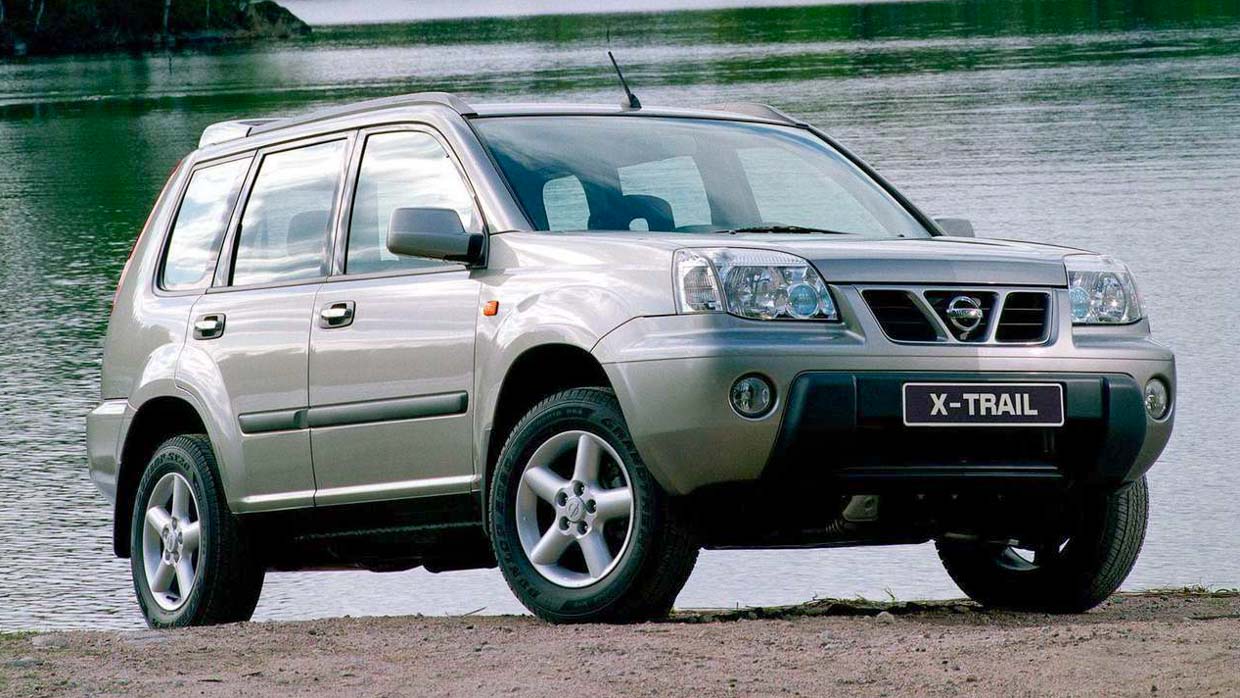
The second, perhaps discordantly, was our family friends arriving in their swish new first-generation X-Trail with their sensibly sized caravan in tow.
It was at a time when ‘SUVs’ weren’t really as we know them today, when the novel idea of a moderately capable, boxy little off roader with a footprint far less obnoxious than something like a Patrol, with still a fairly novel idea. A pretty good idea, actually.
Others thought so to it seems, with over seven million sold globally as of late 2022, though a closer look through the lens at our local market shows there is still room for growth.

Running off the back of a huge 49.9 percent sales increase this year, the fourth-generation X-Trail has tallied 9350 sales so far in 2023 – not bad, but still off the pace of the ageing Toyota RAV4 (22,388) and Mazda CX-5 (16,895) along with the X-Trail’s Outlander twin at 17,762 sales.
But back to that camping trip, and those cockatoos.
As a lad with Subaru WRX model cars and posters strew about his room, the friendly faced silver X-Trail wasn’t ordinarily my sort of thing, but I remember being impressed with the way it handed some moderately bumpy terrain – clearing the rocks and ruts with its decent ground clearance – while backing the family caravan into the powered site.
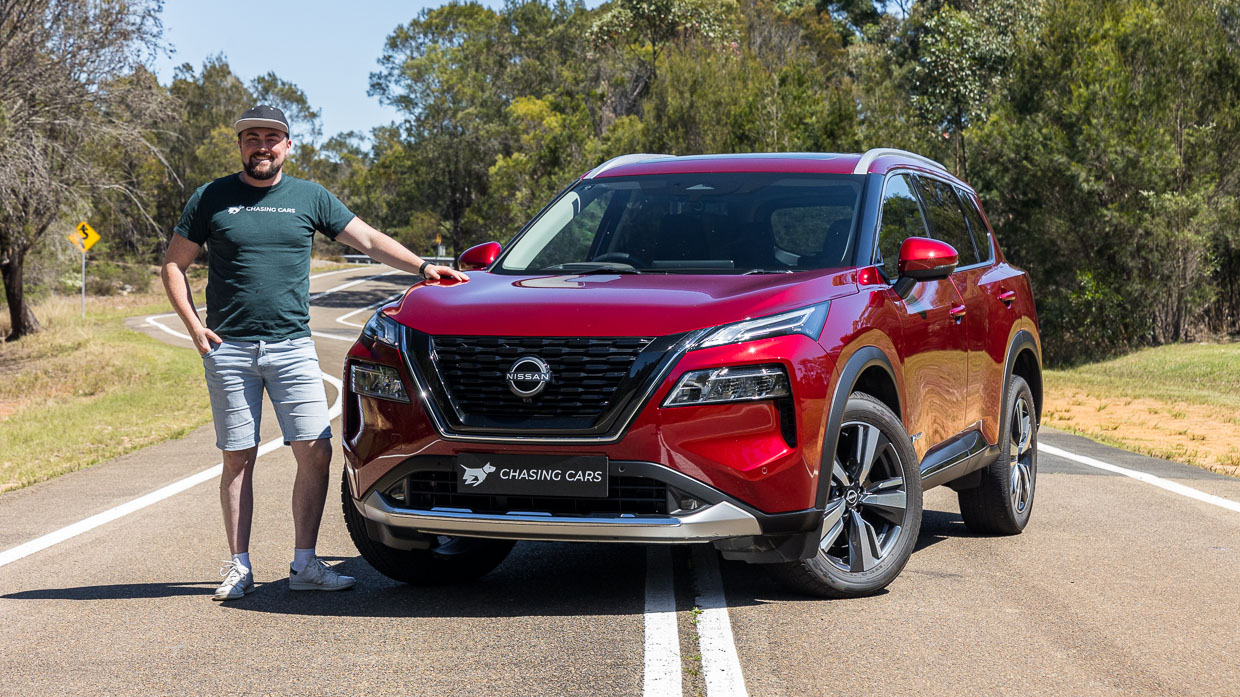
Our family friends then bundled out of the car and began unloading their gear as their father no doubt eyed those same bastard cockatoos, eager to relieve themselves all over his new do-it-all SUV.
So in a weird twist of fate, I now find myself with a new X-Trail in my driveway and a growing family of my own, and you know what? I get the appeal.
Back when it was just my wife and I populating our home, I was a big proponent for the idea of owning a vehicle that was just enough for your needs. Nothing more, nothing less. Hence why our ride was a Mazda MX-5.
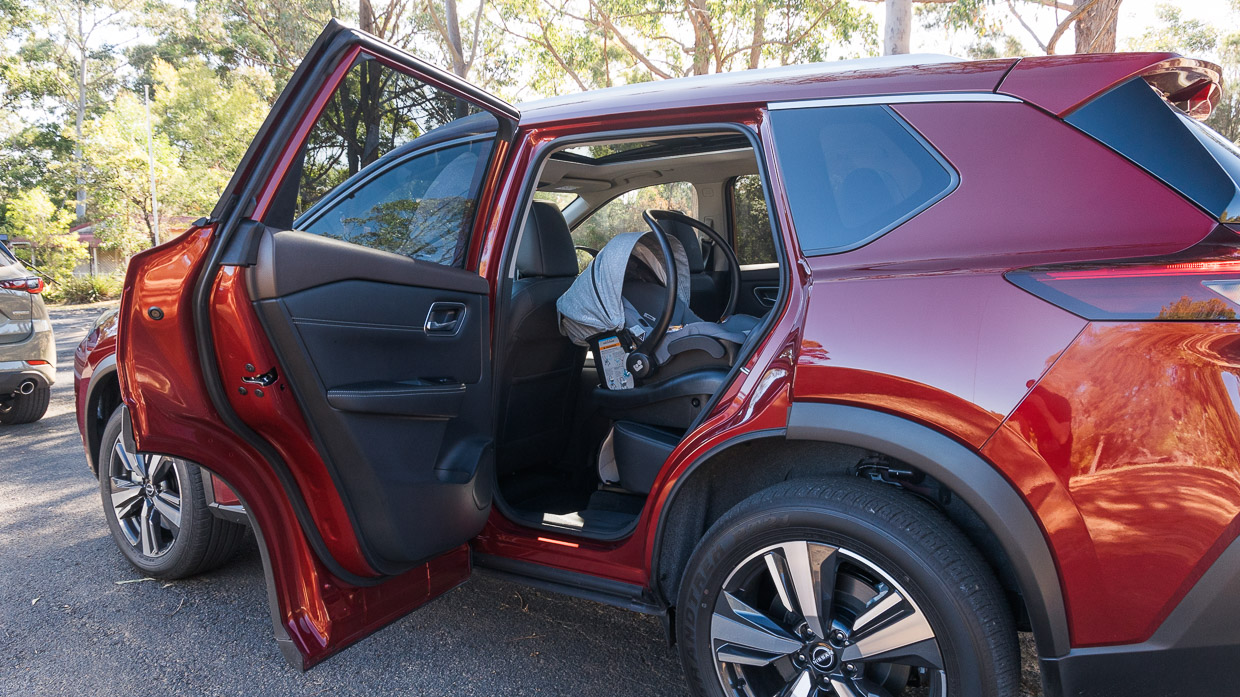
With our daughter now in tow, that’s an idea I’ve thrown completely out the window. Having a car that is 120 percent of what you typically need is excellent for when you occasionally need to carry far more stuff.
And that’s exactly what this X-Trail is, it’s on the bigger side for a midsize SUV but better for it I think, with huge back seats meaning there is zero compromise for front occupants with a rearwards facing baby seat and a decent boot, measuring 575 litres.
That figure, mind you, counts the space above the height of the back seats and window line in a bit of a cheeky move from Nissan Australia. It also doesn’t help that it completely lacks a spare wheel – a whinge I’ll cover in greater detail at a later date.
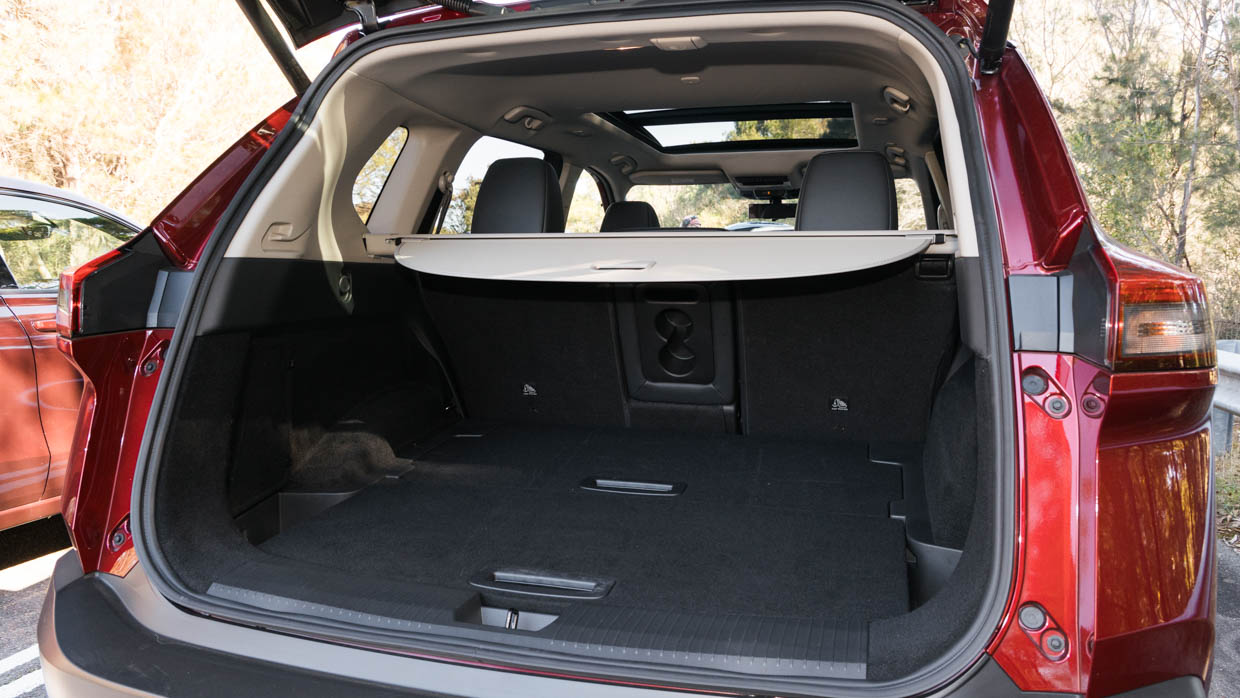
Elsewhere in the cabin, first impressions are good. The front seats are pretty comfortable, as is the suspension over most of the lumps and bumps Sydney dolls out, and it’s quiet, too.
I’ve also taken a strong liking to the physical climate controls – with three zones of adjustability I might add – which sets the tone for Nissan’s no-nonsense approach to interior usability.
I’m not quite as sold on the massive 12.3-inch touchscreen slapped in the centre of the dash, sure it’s a nice upgrade over the fairly petite 8.0-inch unit in the ST and ST-L grades but the huge size of the former panel makes reaching for some icons in the far corner a challenge. The 9.0-inch unit in my old Outlander PHEV was the goldilocks solution I think.
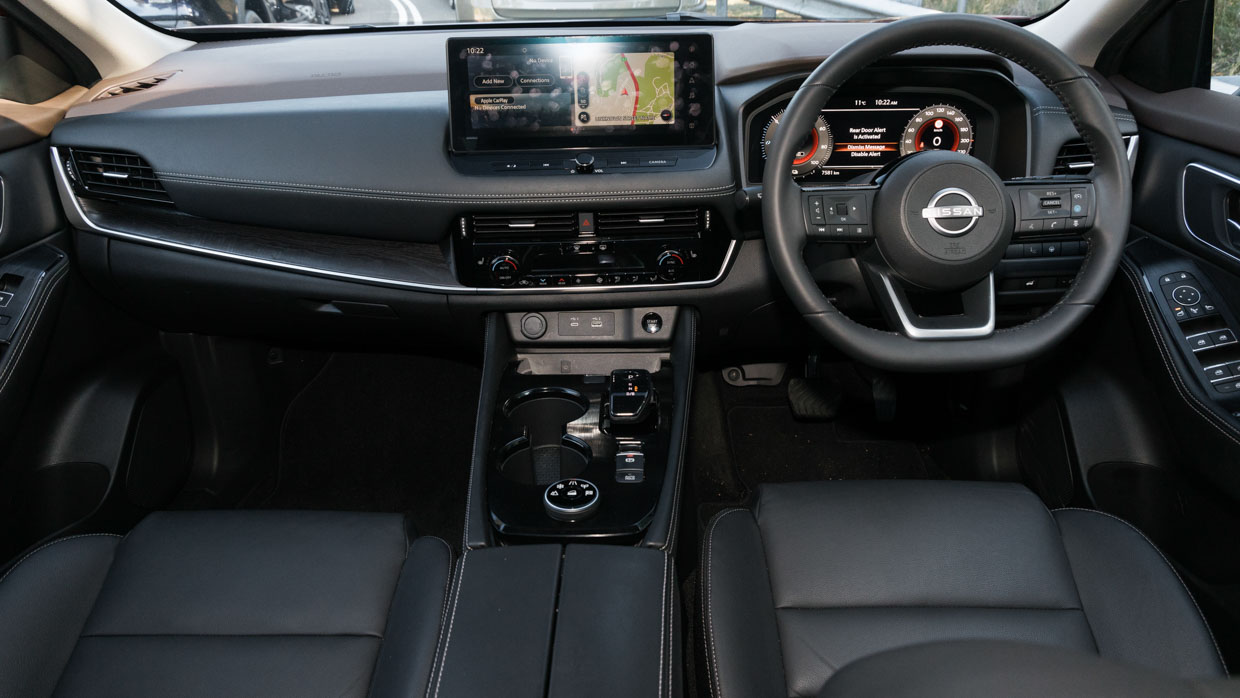
Case in point: the back button in Android Auto sits at the top left, and with my arm outstretched and the car bouncing along the road it suddenly becomes very difficult to hit your target without concentrating, and screens are not where I want my focus.
Speaking of which, I feel a touch cheated by the fact that Nissan offers wireless Apple CarPlay but not Android Auto, which retains a wired-only connection. An oddity which has since been corrected in the US-market Rogue.
But my plans for my long term evaluation of the X-Trail go far beyond the touchscreen, over the next six-months and 10,000km I plan to do extensive fuel efficiency testing to see if Nissan’s E-Power system is worth its upcharge, take several long road trips and generally tackle the struggles of everyday family life.
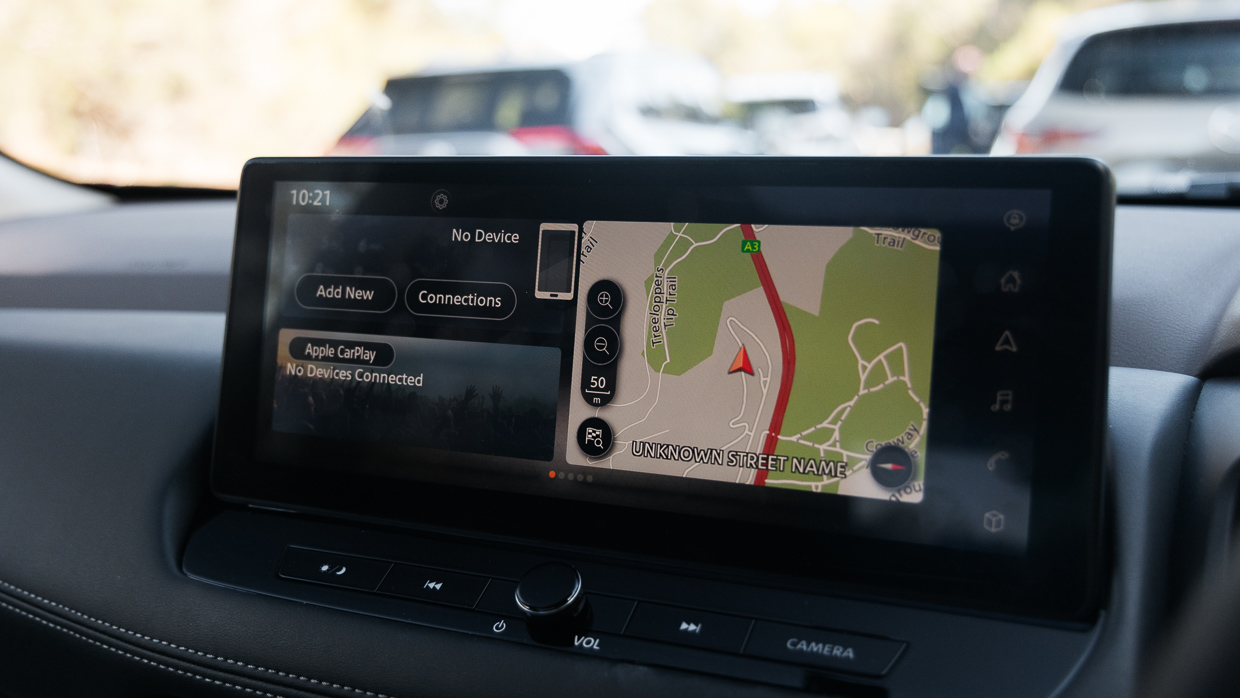
In a way I’m actually a bit excited to drive the modern interpretation of our family friend’s ‘cool’ everyday adventure rig, but it seems I’m not the only one keen to get reacquainted with the X-Trail, a fact I was keenly aware of as I scrubbed bird poo off the front ¾ pannel just days into my ownership..
Bloody cockatoos.
‘Shows strong potential but lets themselves down in key areas’, on a report card level, this was the verdict I applied to my just-gone Mitsubishi Outlander PHEV long termer.
But what if that car could have a second chance, with all the fundamental goodness of the first attempt but with a hybrid system perhaps better suited to the carefree Aussie lifestyle and, erm, a Nissan badge?
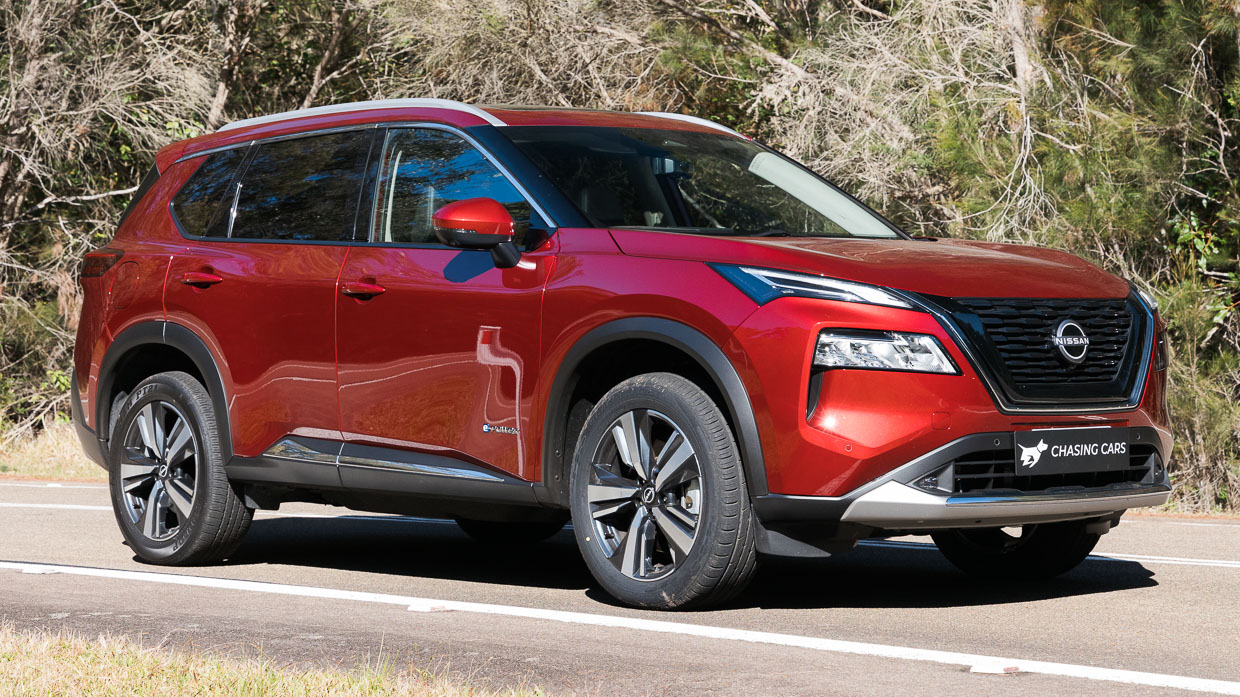
Enter the fourth-generation ‘T33’ X-Trail; also known as the Nissan Rogue to our friends in the United States. It sits upon same CMF-CD platform shared under the Renault-Nissan-Mitsubishi Alliance, and as a result, the X-Trail and Outlander share a lot in common, inside and out.
Entering the Australian market in late 2022 with Nissan’s ‘E-Power’ hybrid option arriving some months after, the X-Trail caught the eye of many and for us at the Chasing Cars office, it’s a model which we’ve grown more fond of over time.
It’s hard to stand out in the fiercely competition midsize SUV segment, what with the likes of the Toyota RAV4, Mazda CX-5 and Subaru Forester holding claim not as just big sellers, but options Chasing Cars rates as worthy contenders for your driveway.

In our recent reviews, we’ve praised the solid fundamentals of the new-generation X-Trail with decent driving dynamics, a practical and modern interior along with its decently sized boot and hybrid option. Few of its features or claims are class-leading, but does it matter?
Nissan has also wisely kept the X-Trail relatively affordable with the range starting from $37,250 before on-road costs for the FWD ST and topping out at $57,690 for the full-fat Ti-L AWD with the E-Power hybrid system.
The aforementioned drivetrain will only set you back an extra $3200 to $4200 depending on the grade, and is available on all but the entry-level ST. In terms of fuel consumption, 2.5L AWD petrol has a claimed consumption of 7.8L/100km while E-Power AWD hybrid version uses far less at 6.1L/100km.
The X-Trail E-Power is available in three trim grades: the ST-L ($49,990 before on-road costs), the middle-spec Ti ($54,690) and the flagship Ti-L ($57,690).
We often find that the middle variant is the ‘goldilocks’, so with that hunch in mind, we selected the X-Trail E-Power Ti for our long-term test.
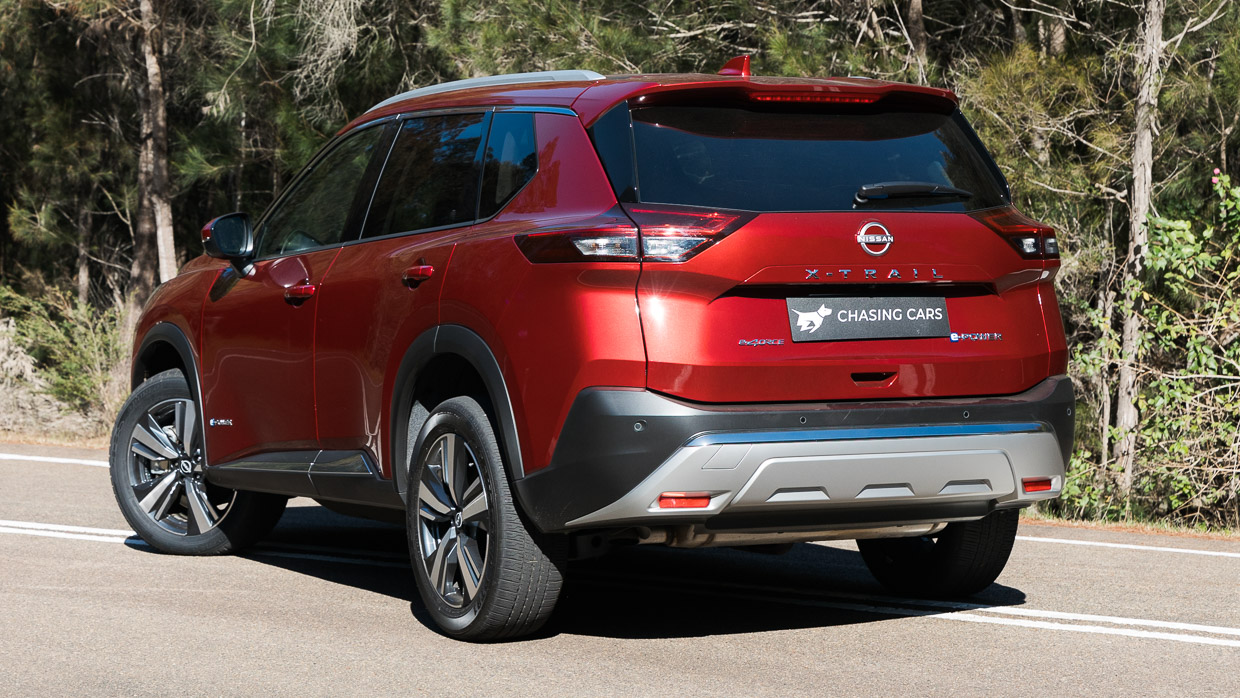
In terms of exterior colour, we’ve gone for a deep solid red called scarlet ember – a no-cost option. Our preference for the optional, no-cost light grey leather interior was unavailable so our car is fitted with the standard black leather upholstery.
We have no other options on our test car. It is worth noting that there are seven metallic or pearl colours that attract a $700 premium, while five colours are available with a contrast black roof for $1200.
For its $54,690 price (about $59,000 driveaway), our X-Trail Ti E-Power includes the following features:

Some of the highlight safety features include:
It’s worth noting that above this sits the Ti-L which adds quilted Nappa leather, Bose 10-speaker sound system, pull-up rear sunshades, heated steering wheel, heated rear outboard seats and ambient lighting.
Key specs (as tested)
About Chasing cars
Chasing Cars reviews are 100% independent.
Because we are powered by Budget Direct Insurance, we don’t receive advertising or sales revenue from car manufacturers.
We’re truly independent – giving you Australia’s best car reviews.
The estimate provided does not take into account your personal circumstances but is intended to give a general indication of the cost of insurance, in order to obtain a complete quote, please visit www.budgetdirect.com.au. Estimate includes 15%^ online discount.
^Conditions Apply
Budget Direct Insurance arranged by Auto & General Services Pty Ltd ACN 003 617 909(AGS) AFSL 241 411, for and on behalf of the insurer, Auto & General Insurance Company Limited(ABN 42 111 586 353, AFSL 285 571).Because we don’t know your financial needs, we can’t advise you if this insurance will suit you. You should consider your needs and the Product Disclosure Statement before making a decision to buy insurance. Terms and conditions apply.
Indicative quote based on assumptions including postcode , 40 year old male with no offences, licence suspensions or claims in the last 5 years, a NCD Rating 1 and no younger drivers listed. White car, driven up to 10,000kms a year, unfinanced, with no modifications, factory options and/or non-standard accessories, private use only and garaged at night.
^Online Discounts Terms & Conditions
1. Discounts apply to the premium paid for a new Budget Direct Gold Comprehensive Car Insurance, Third Party Property Only or Third Party Property, Fire & Theft Insurance policy initiated online on or after 29 March 2017. Discounts do not apply to optional Roadside Assistance.
2. Discounts do not apply to any renewal offer of insurance.
3. Discounts only apply to the insurance portion of the premium. Discounts are applied before government charges, taxes, levies and fees, including instalment processing fees (as applicable). The full extent of discounts may therefore be impacted.
4. We reserve the right to change the offer without notice.